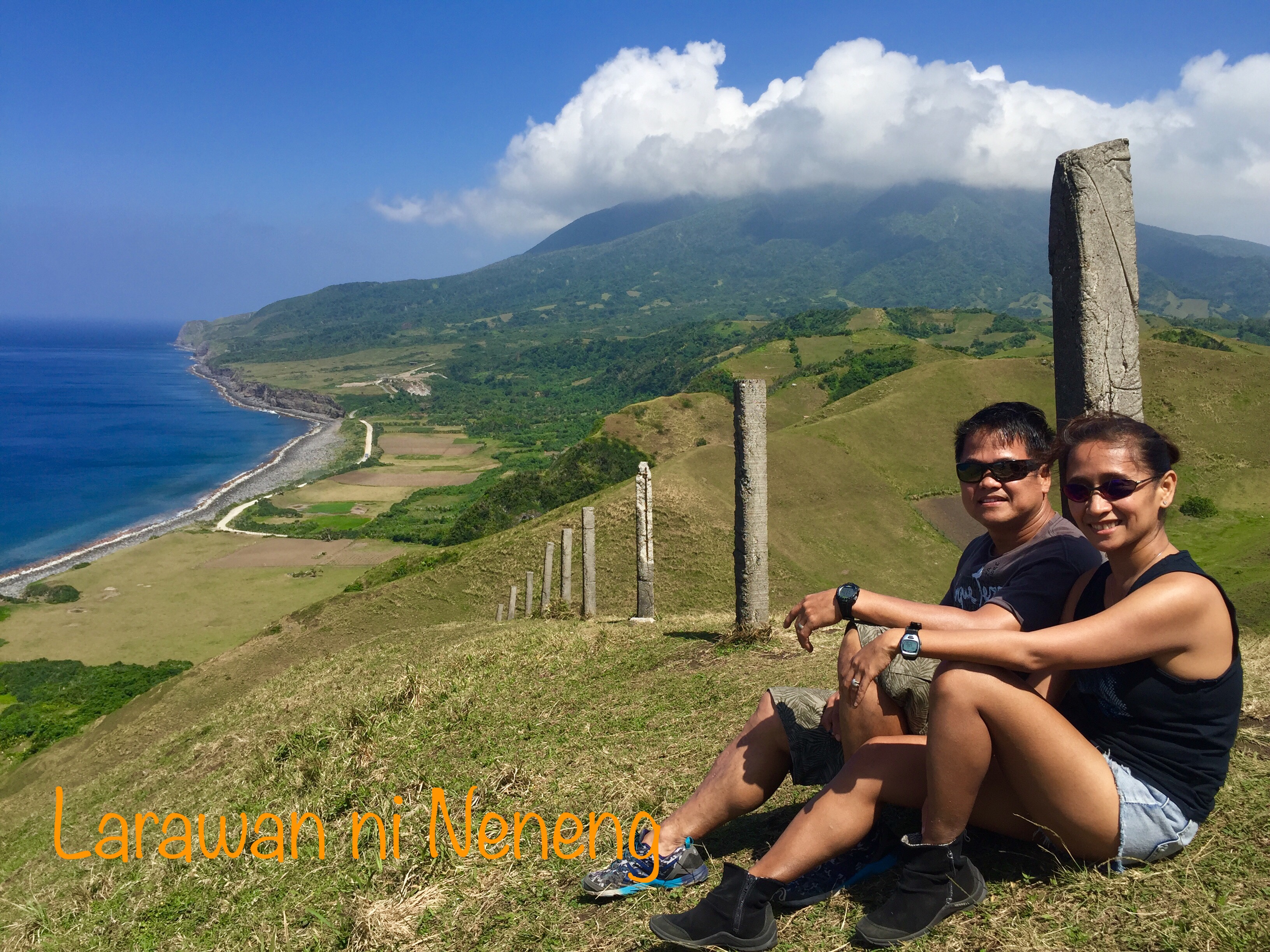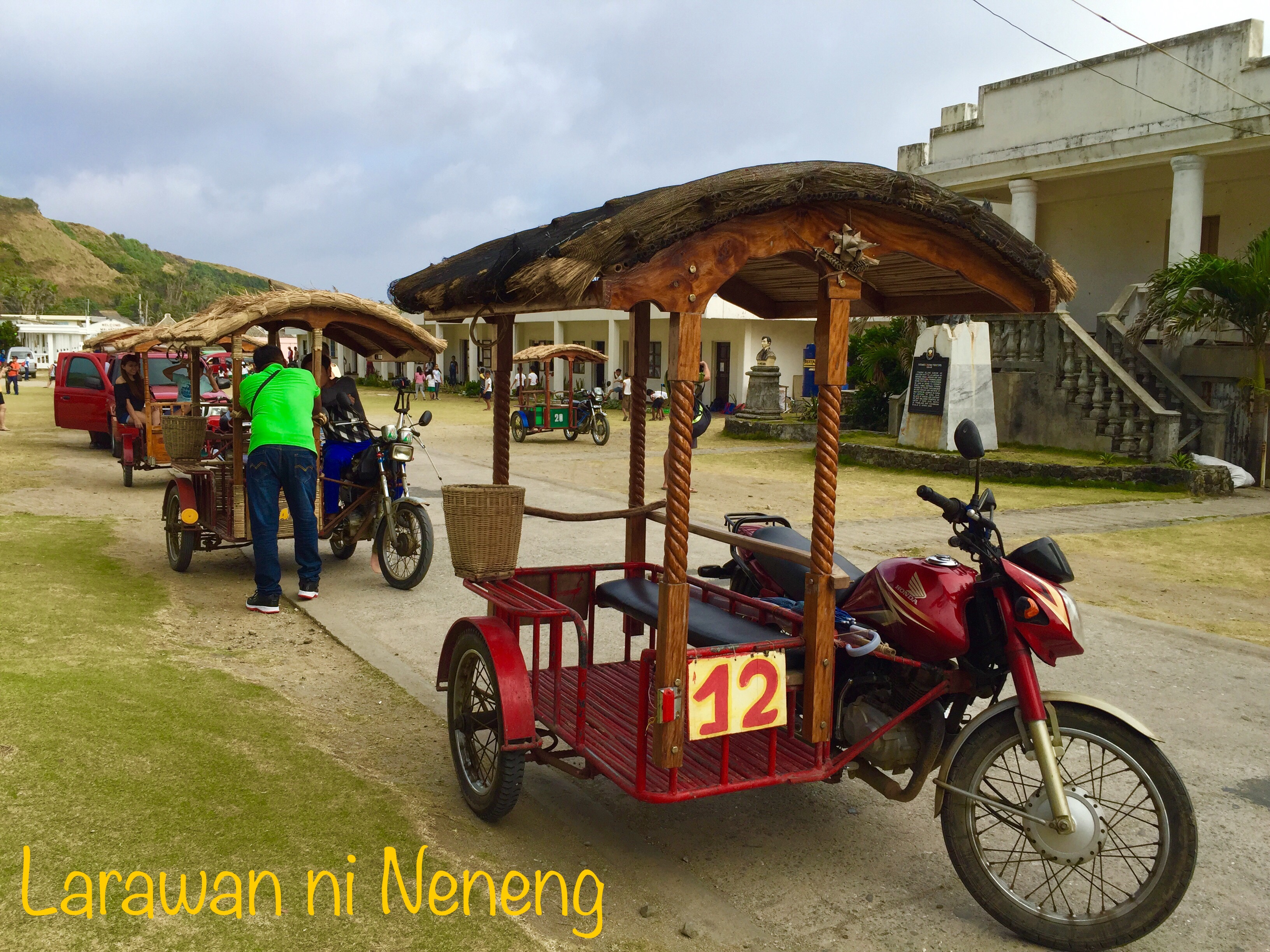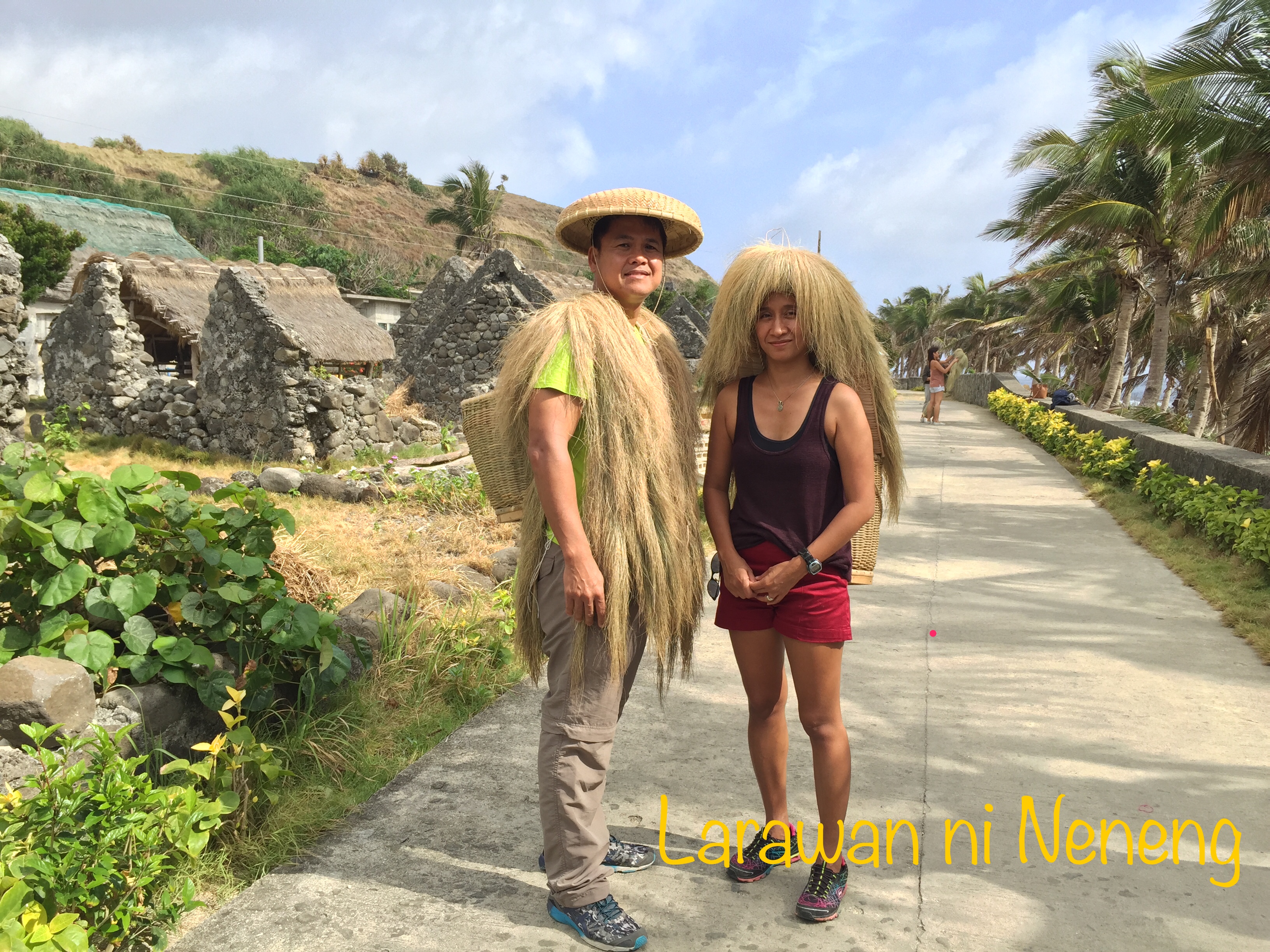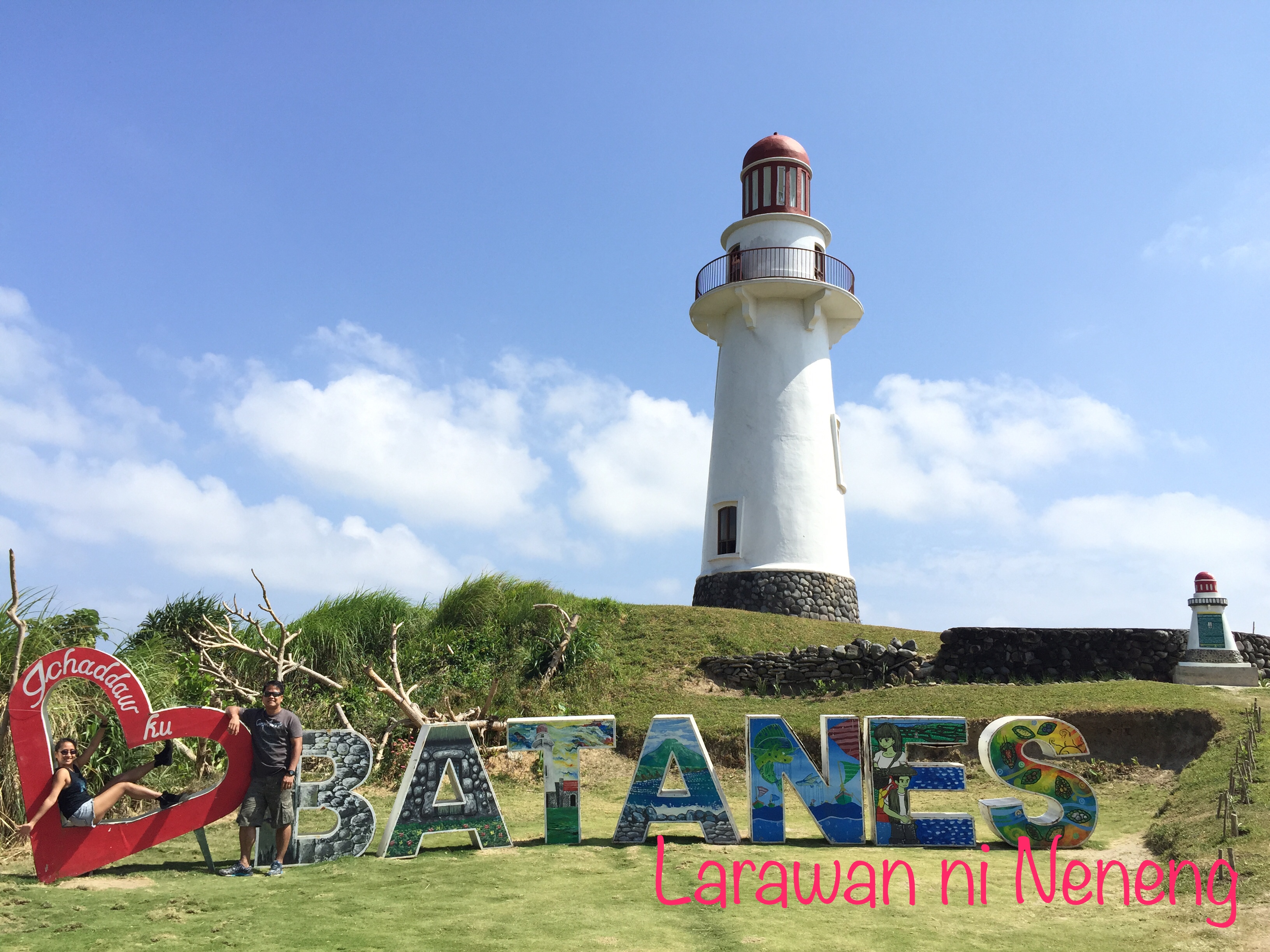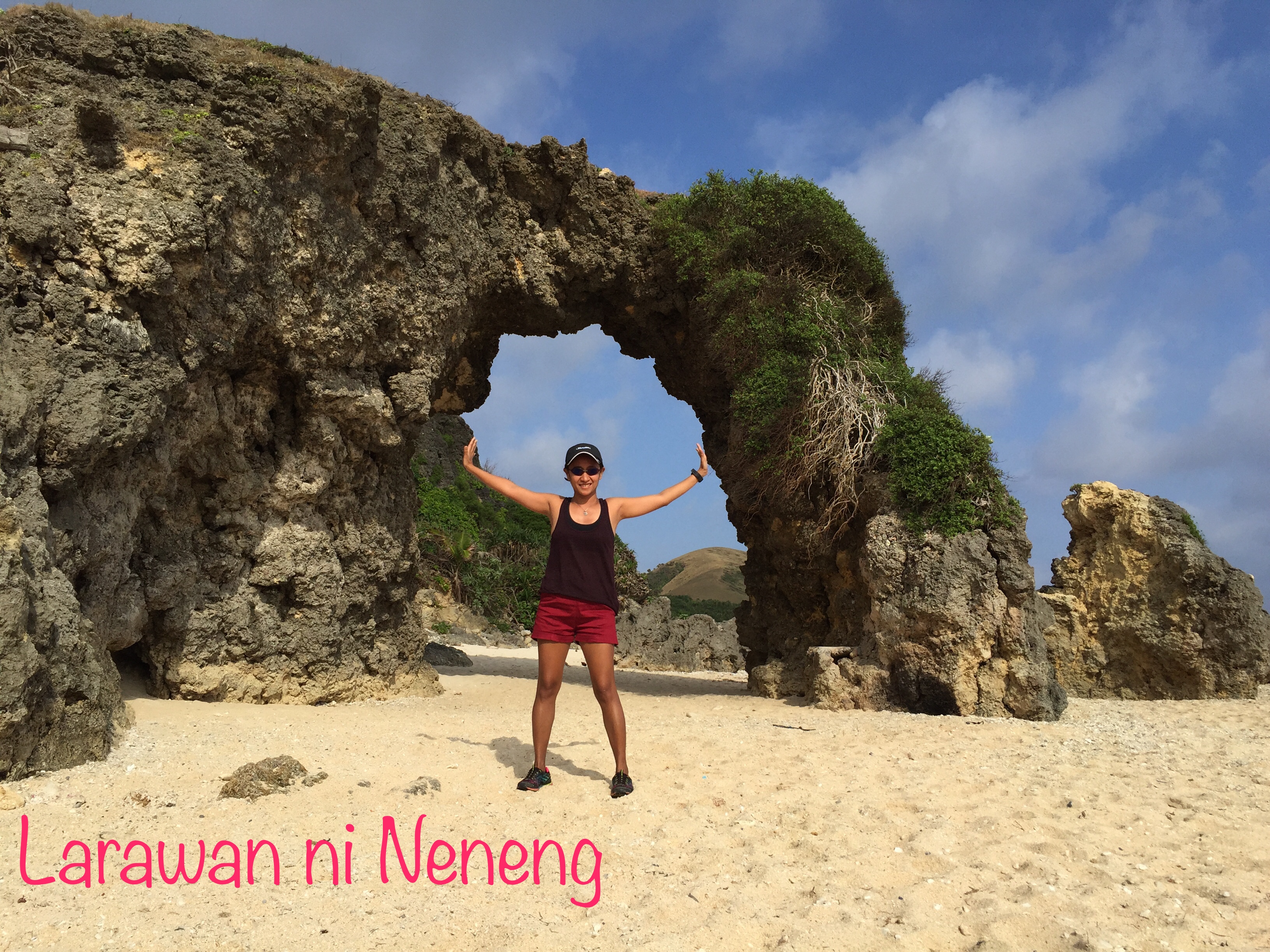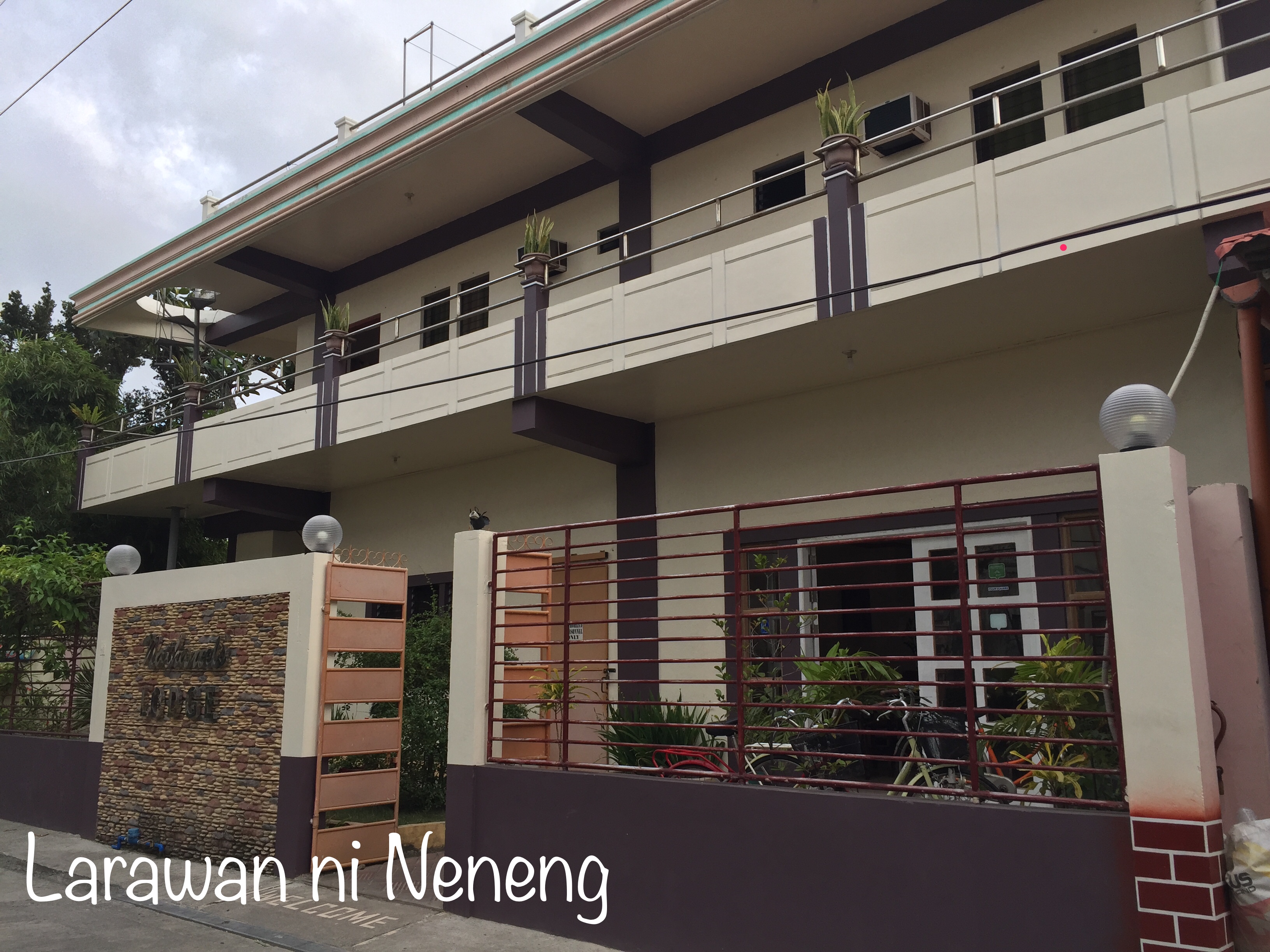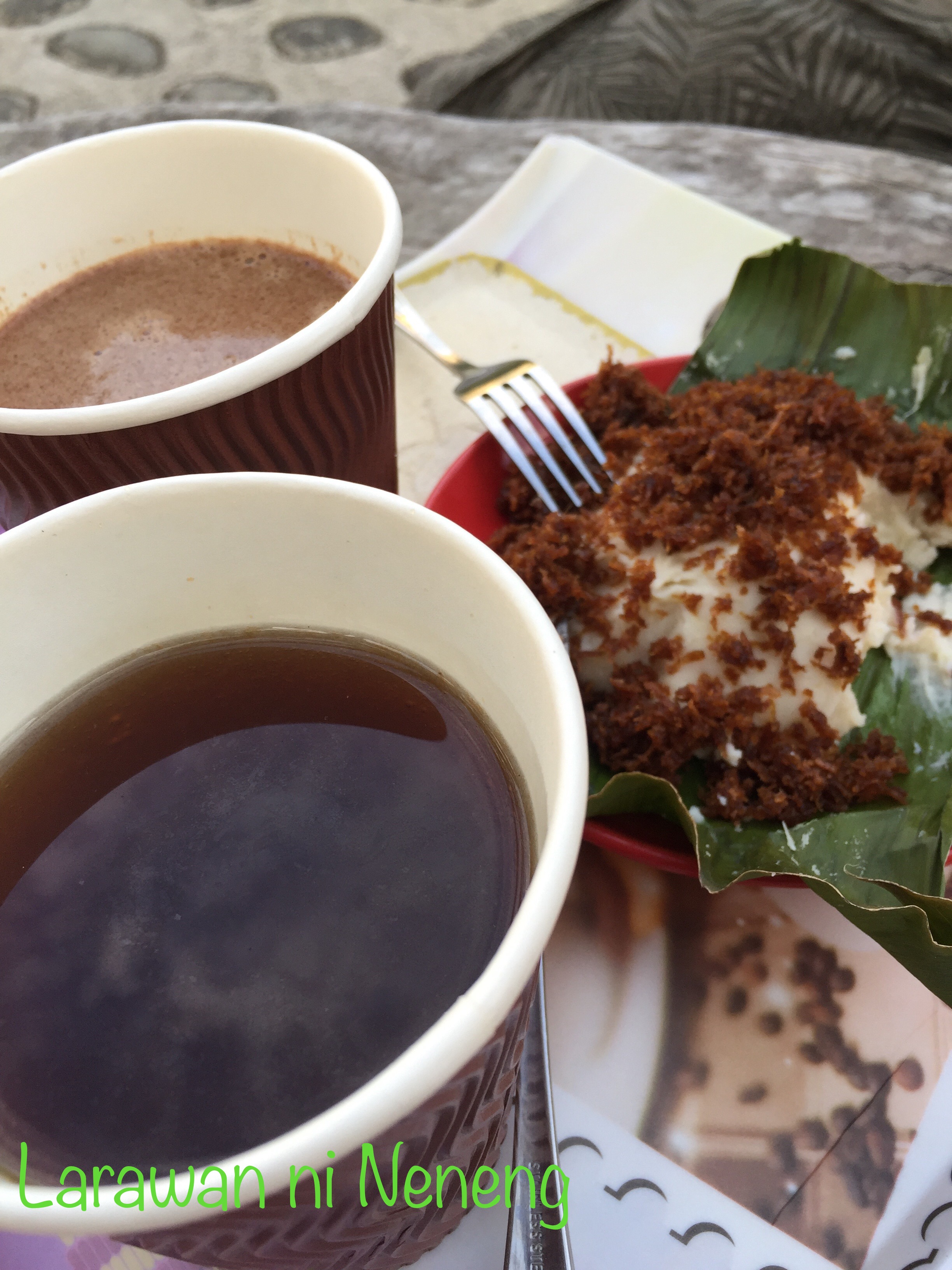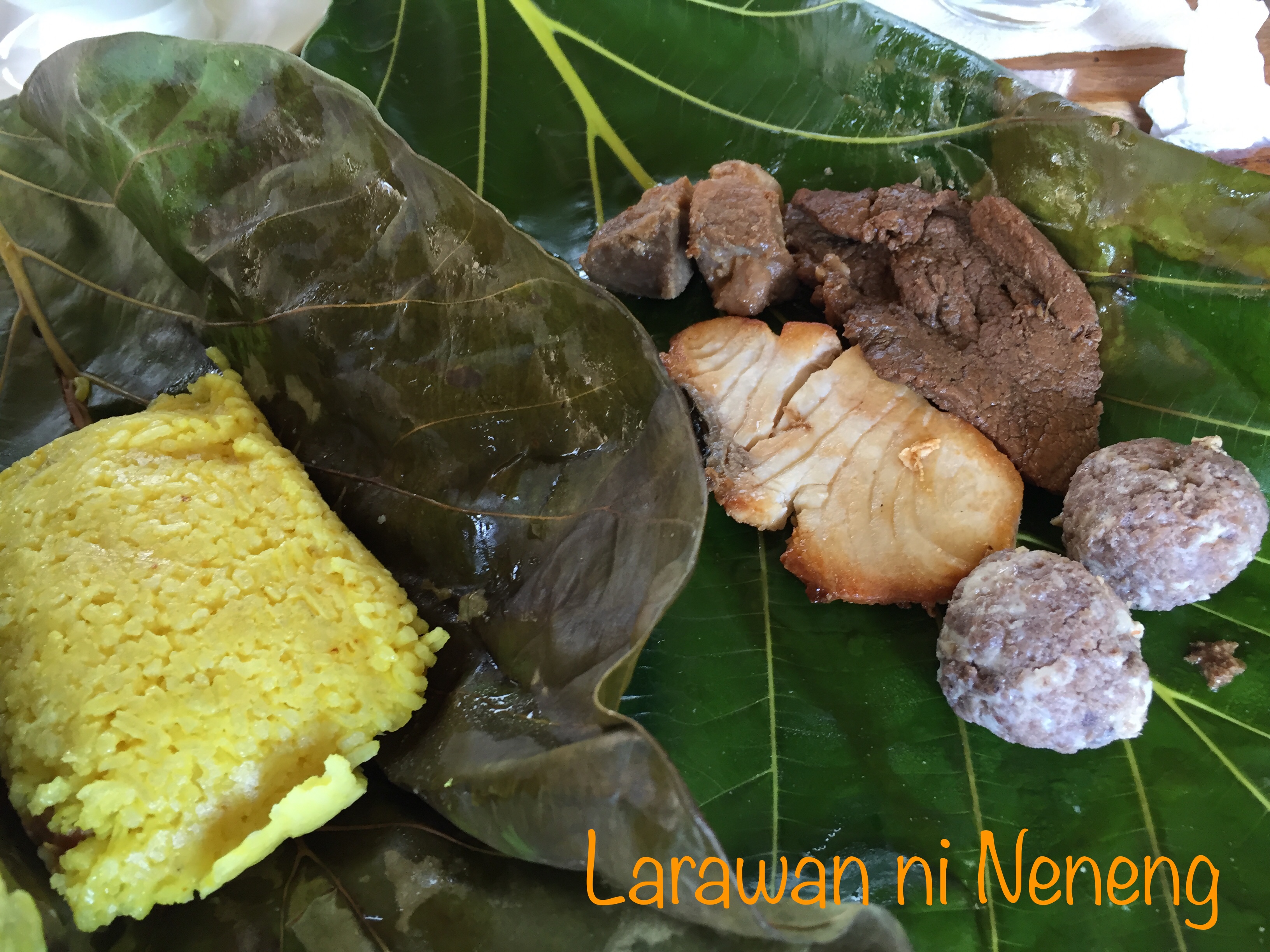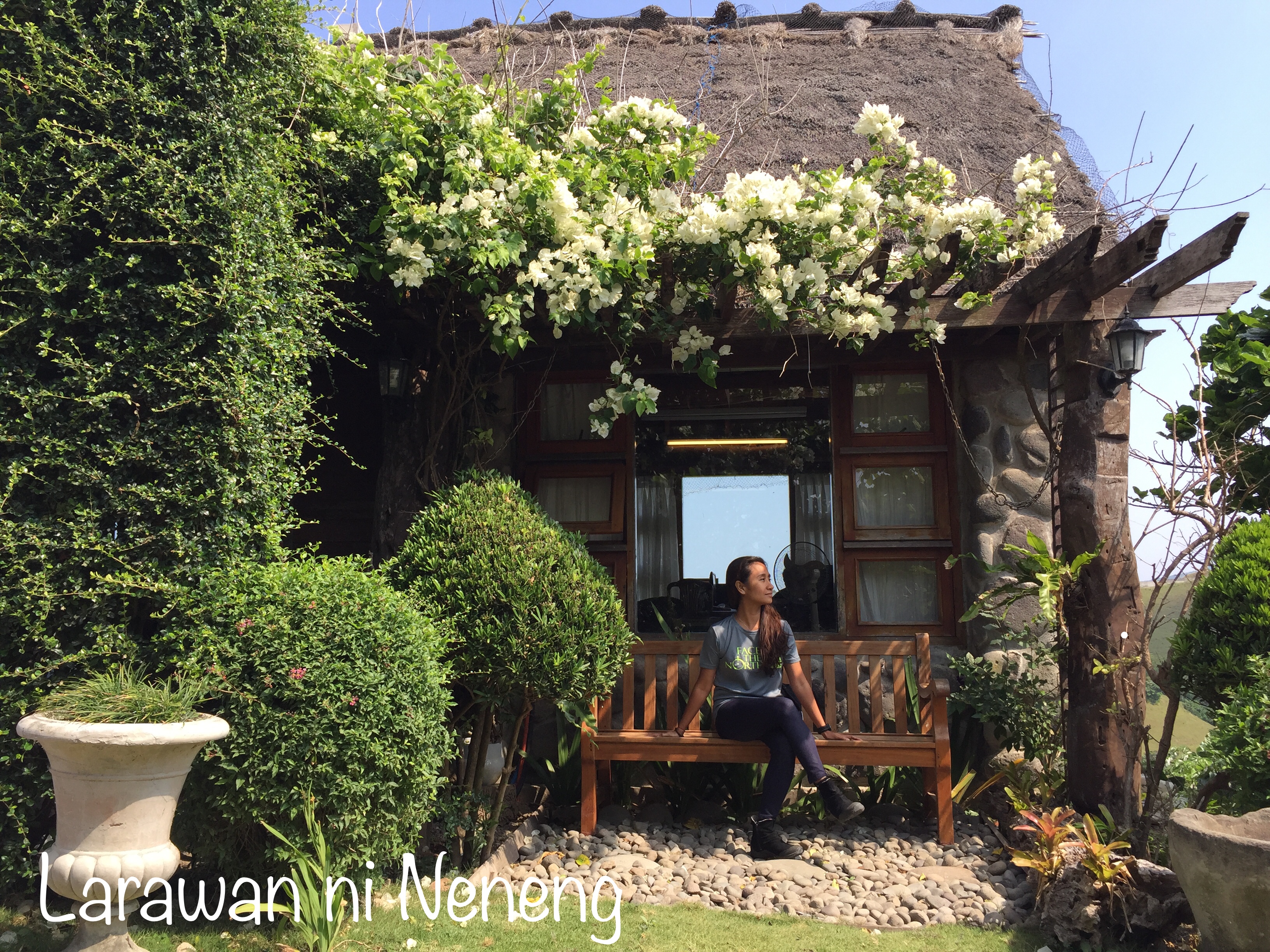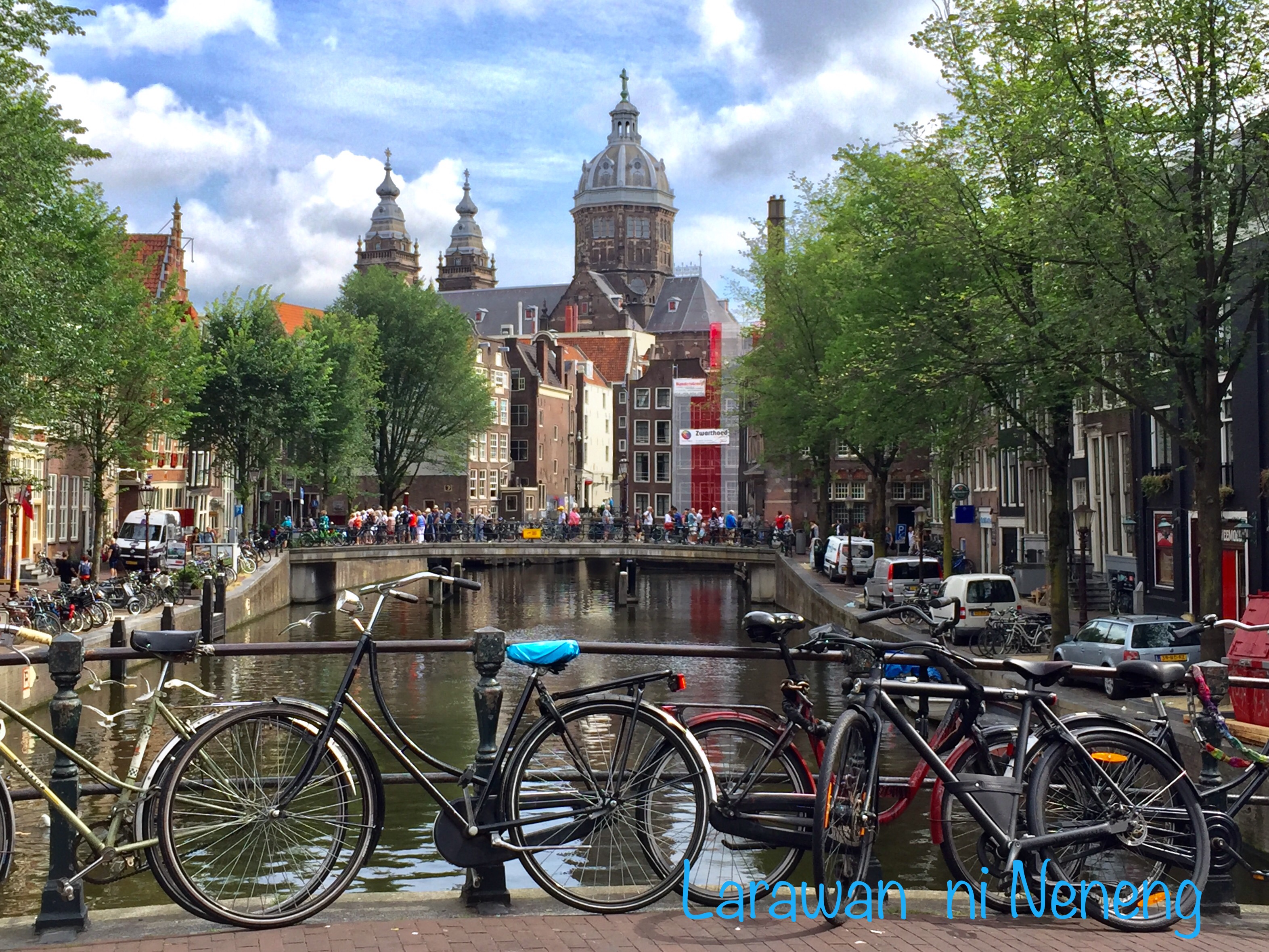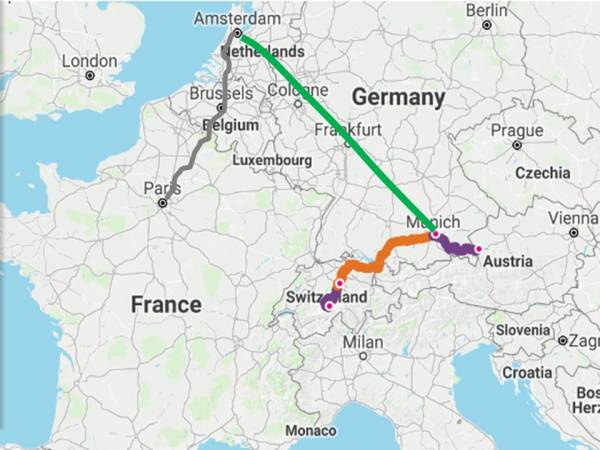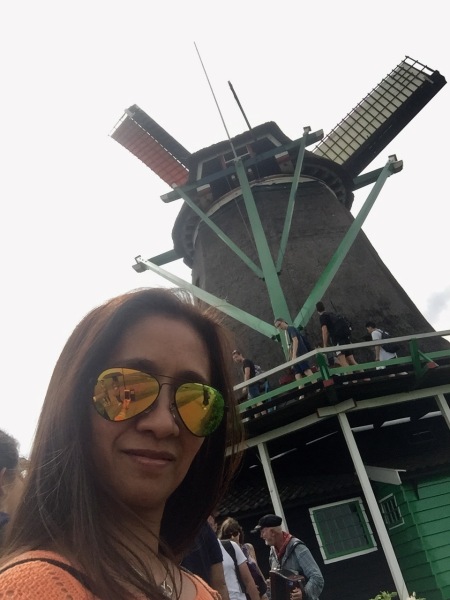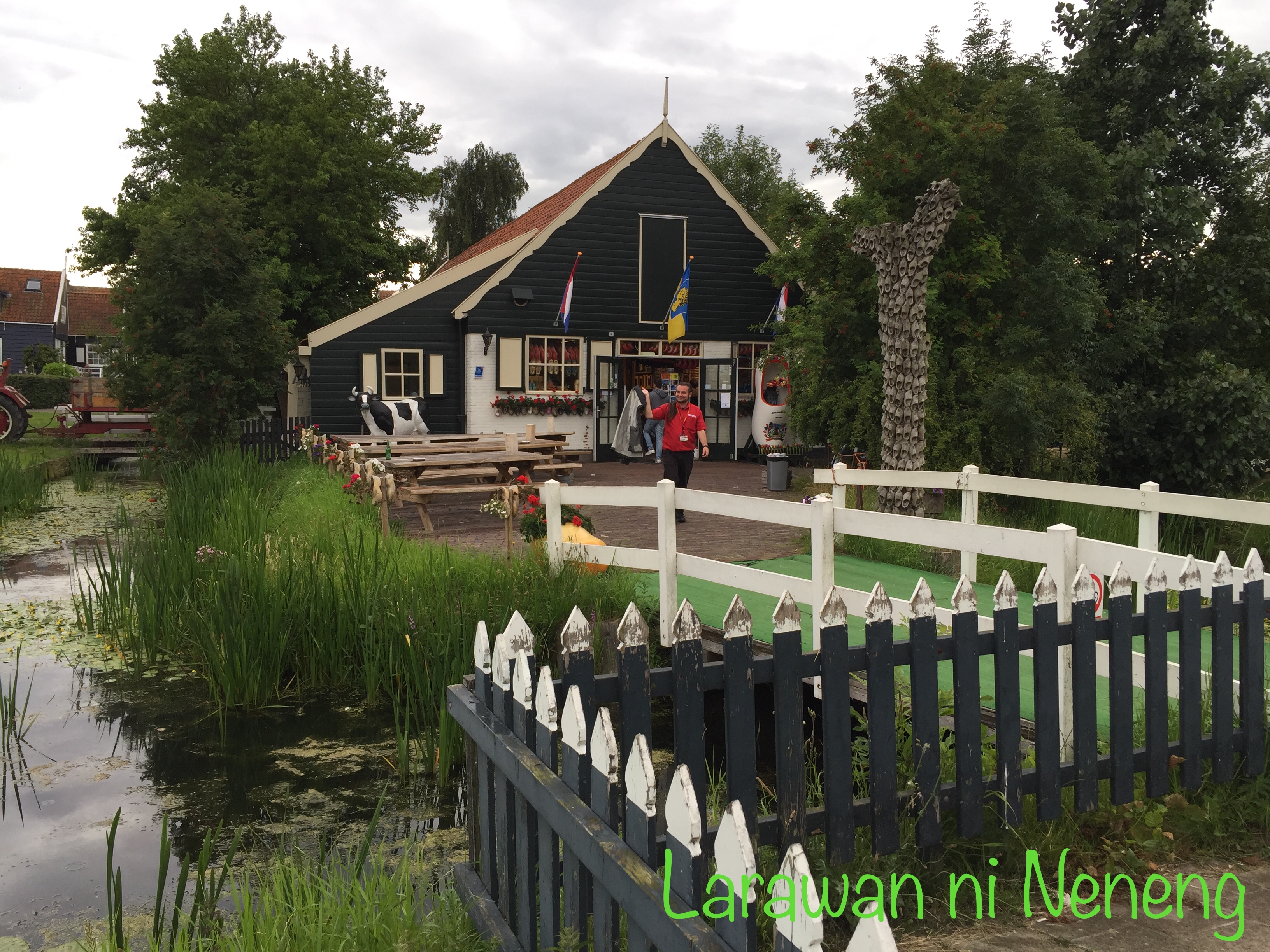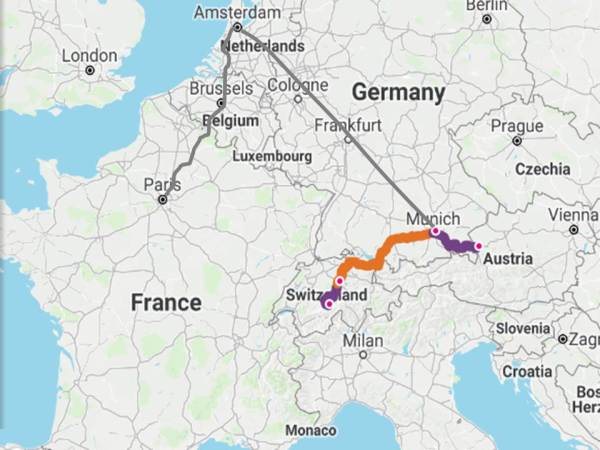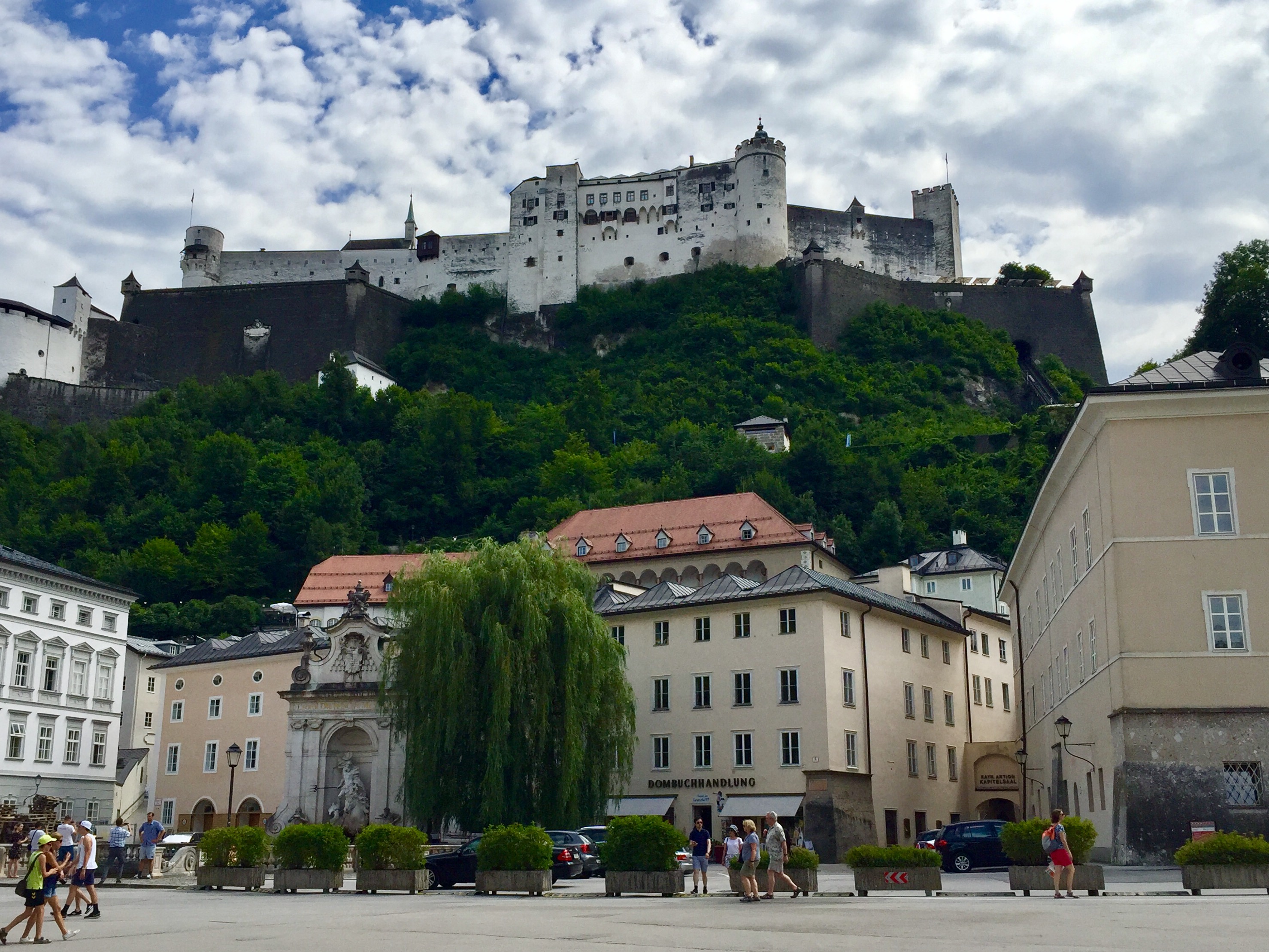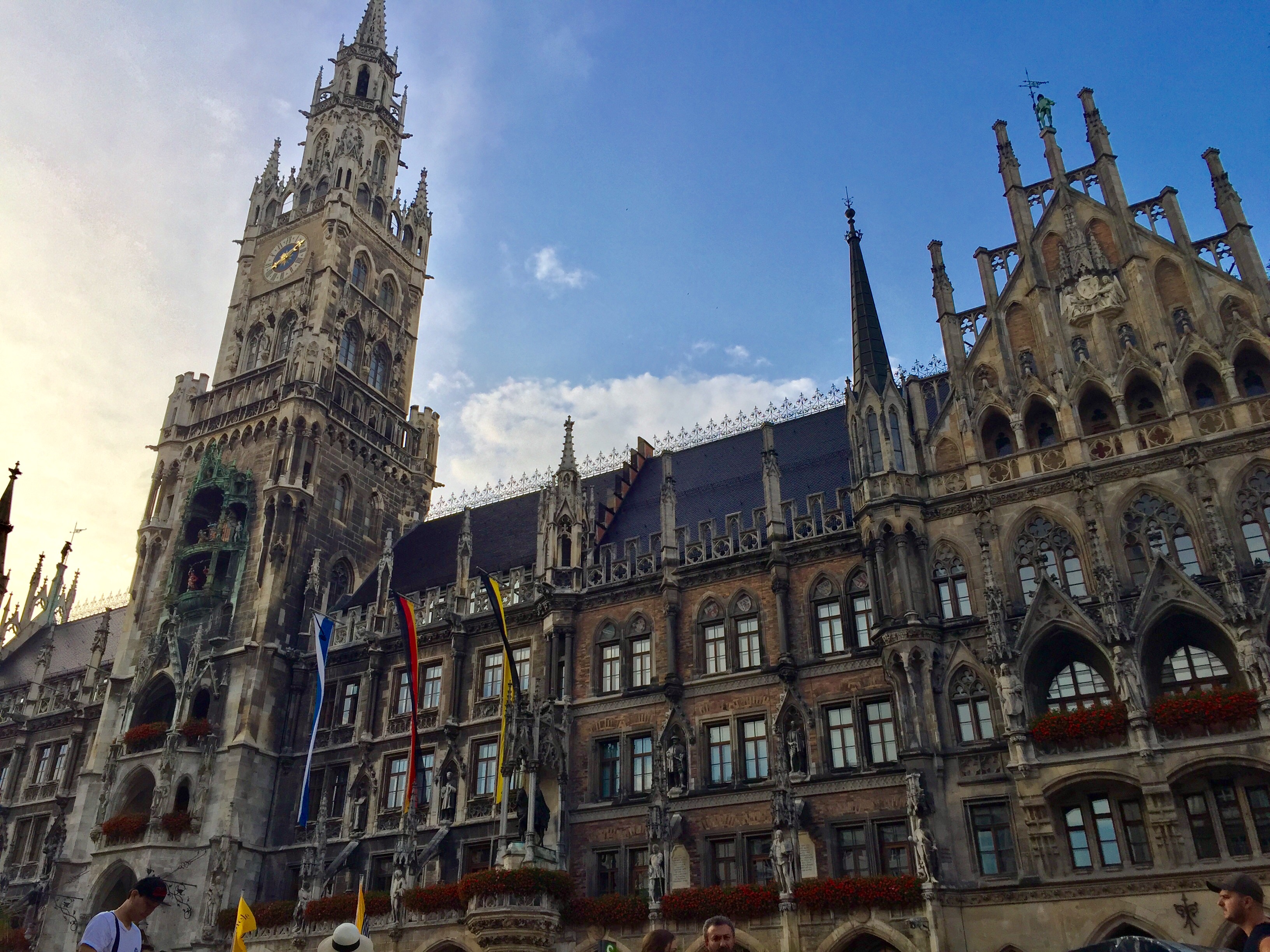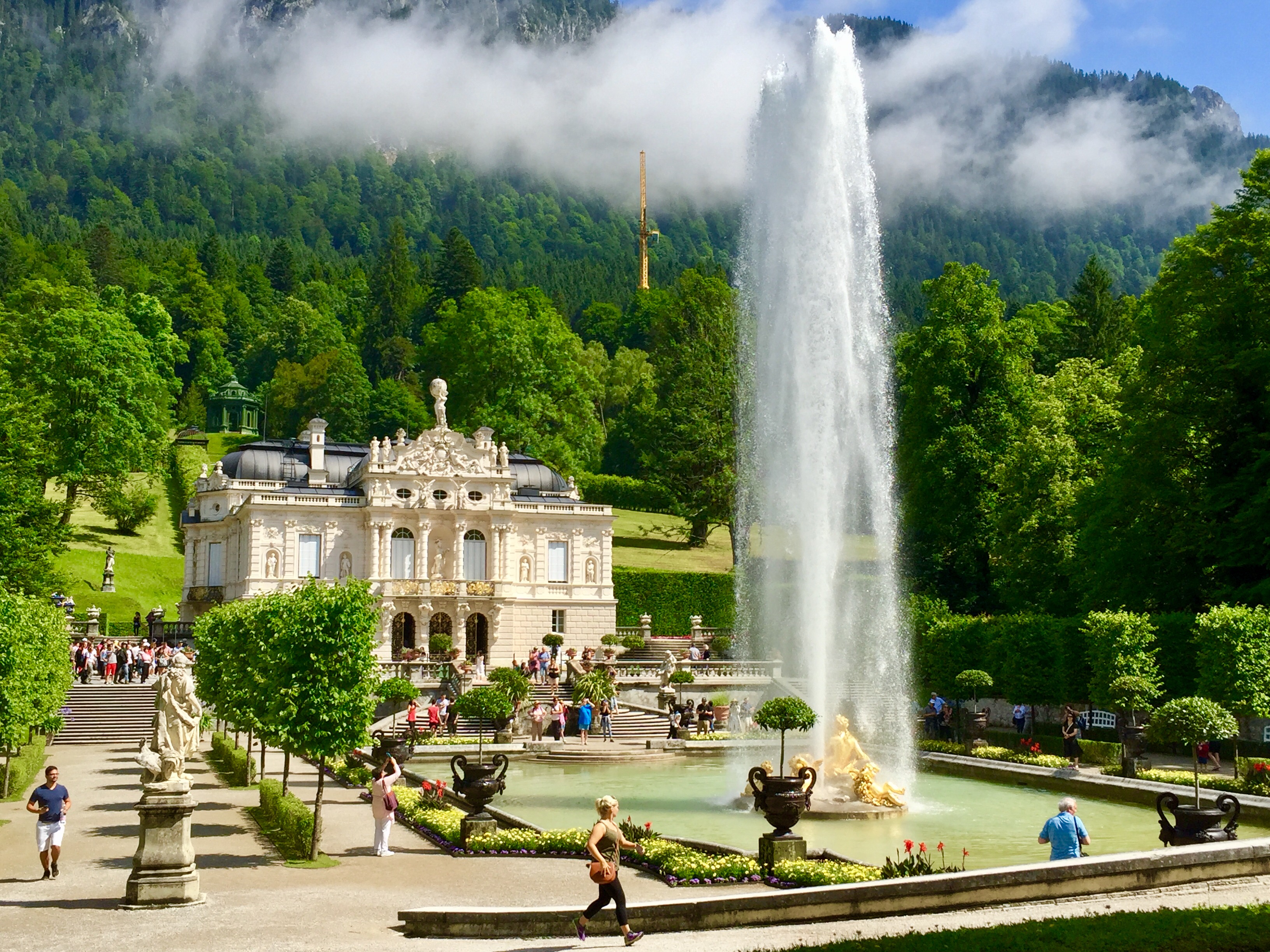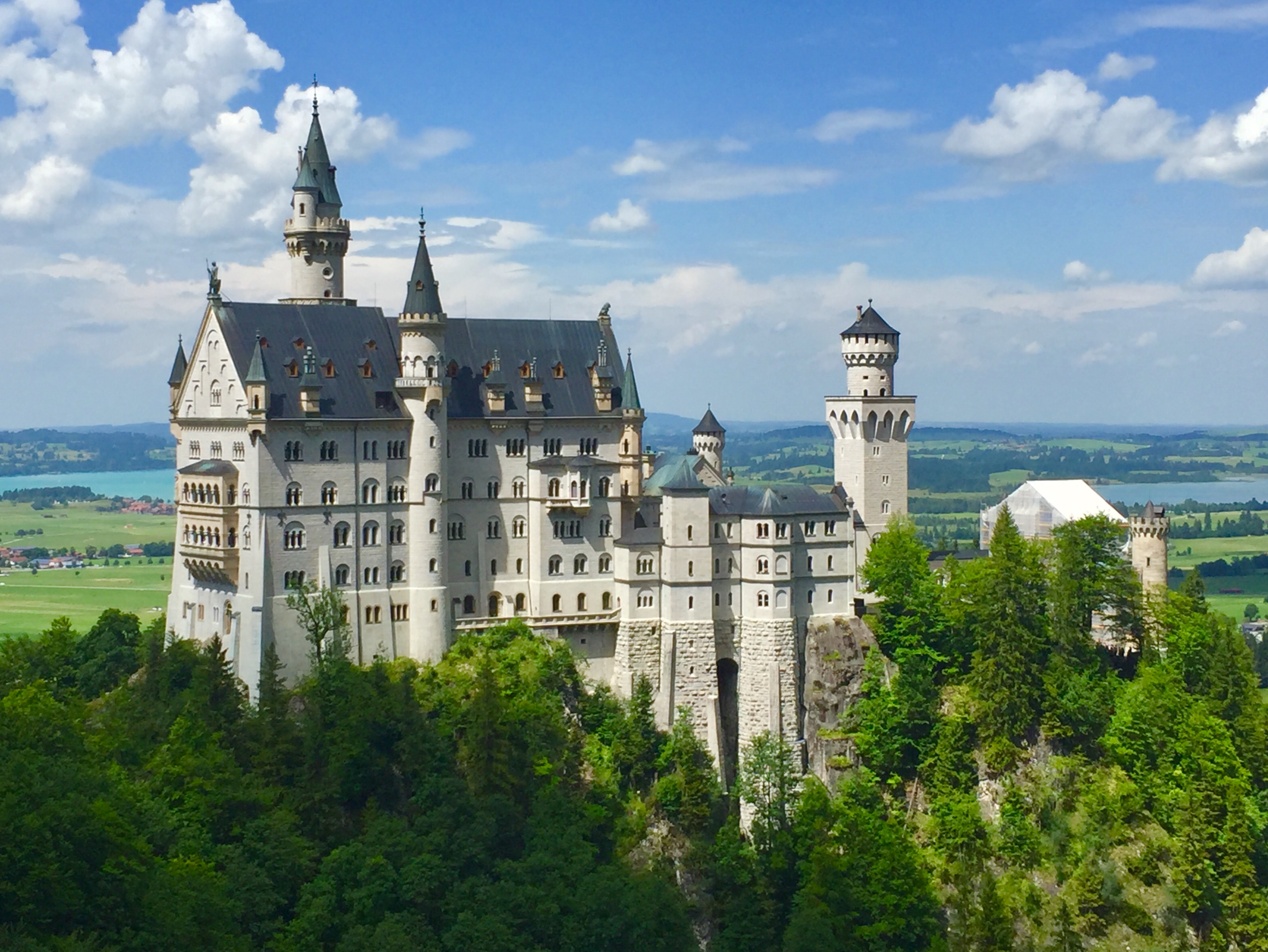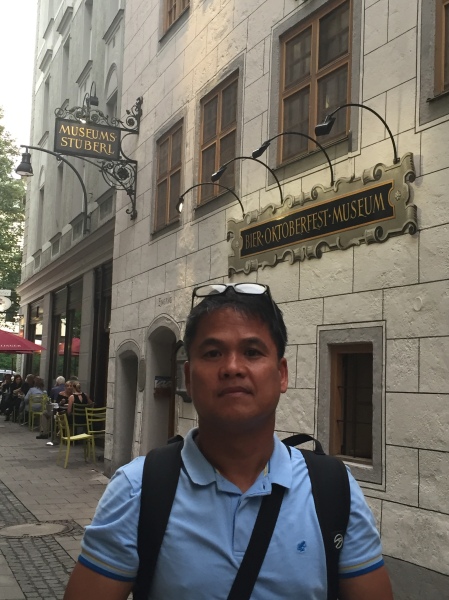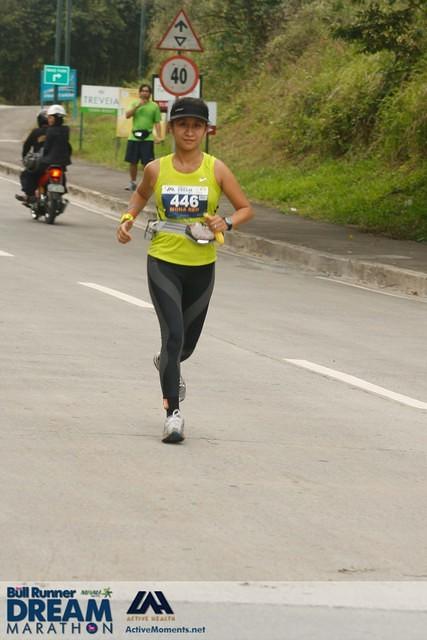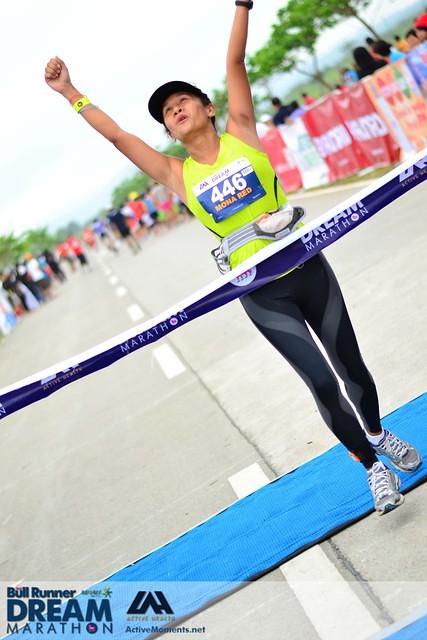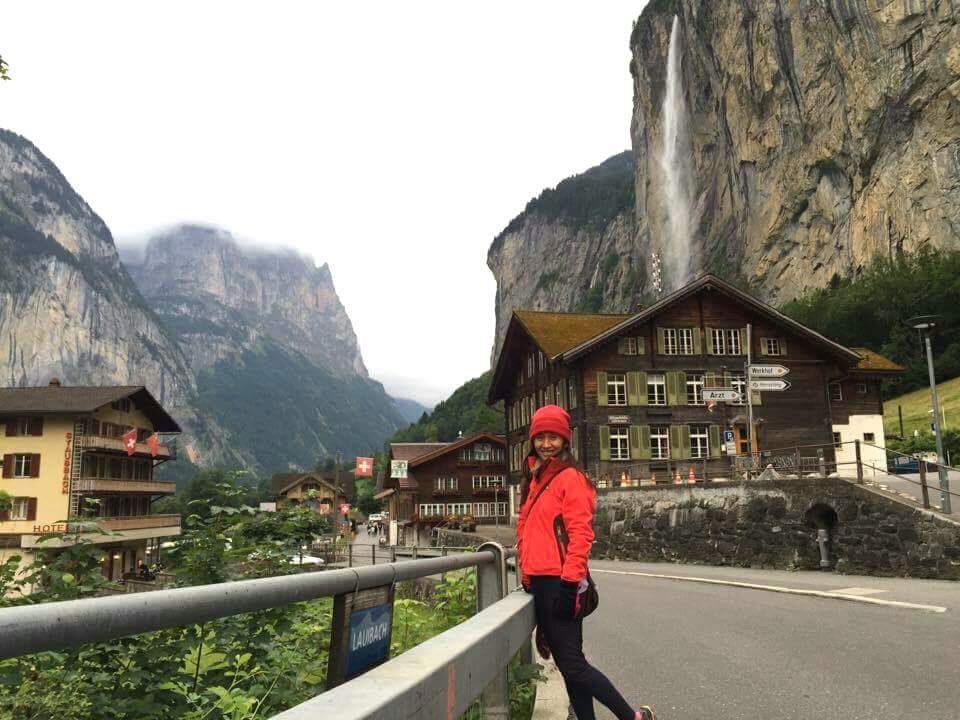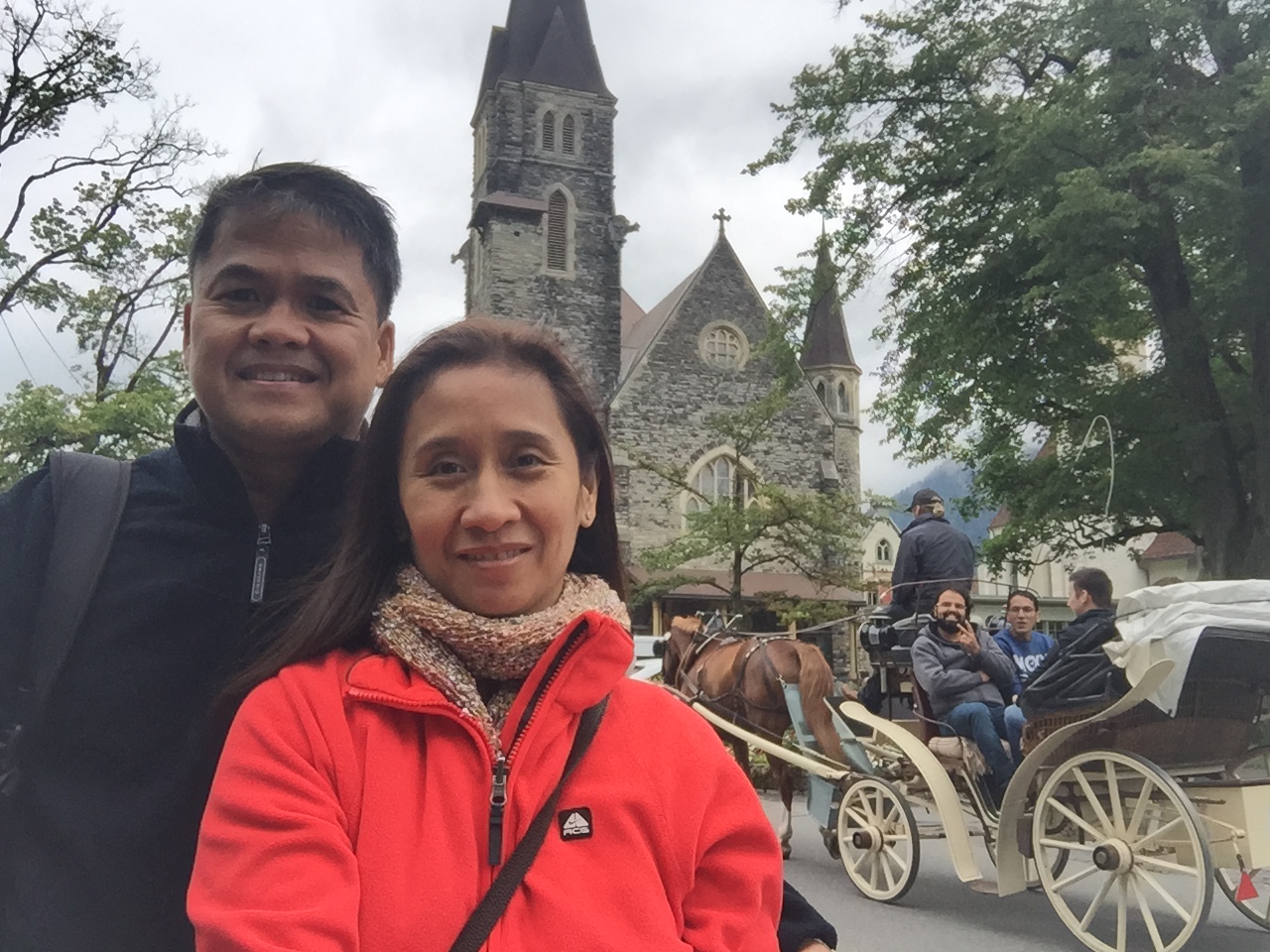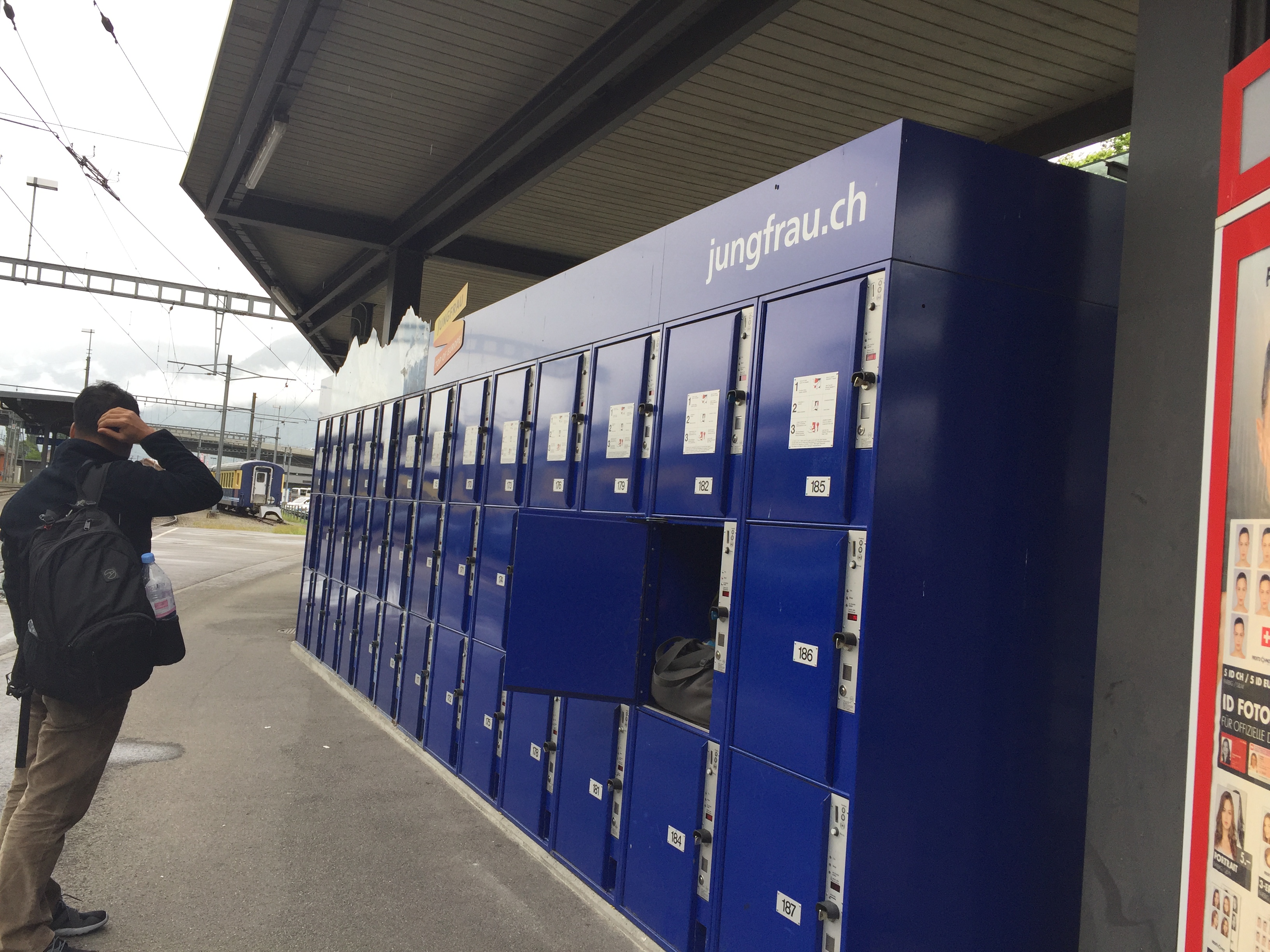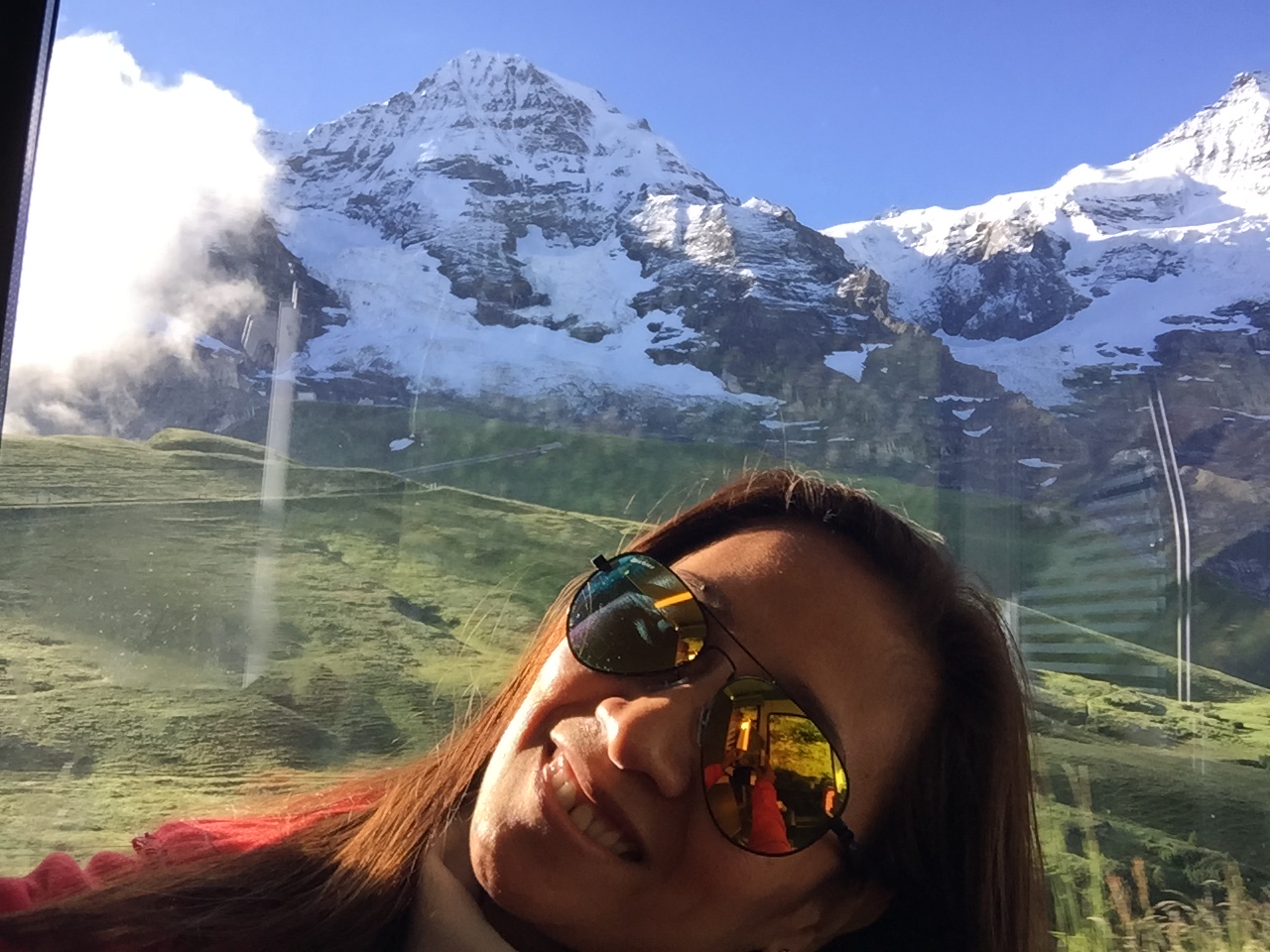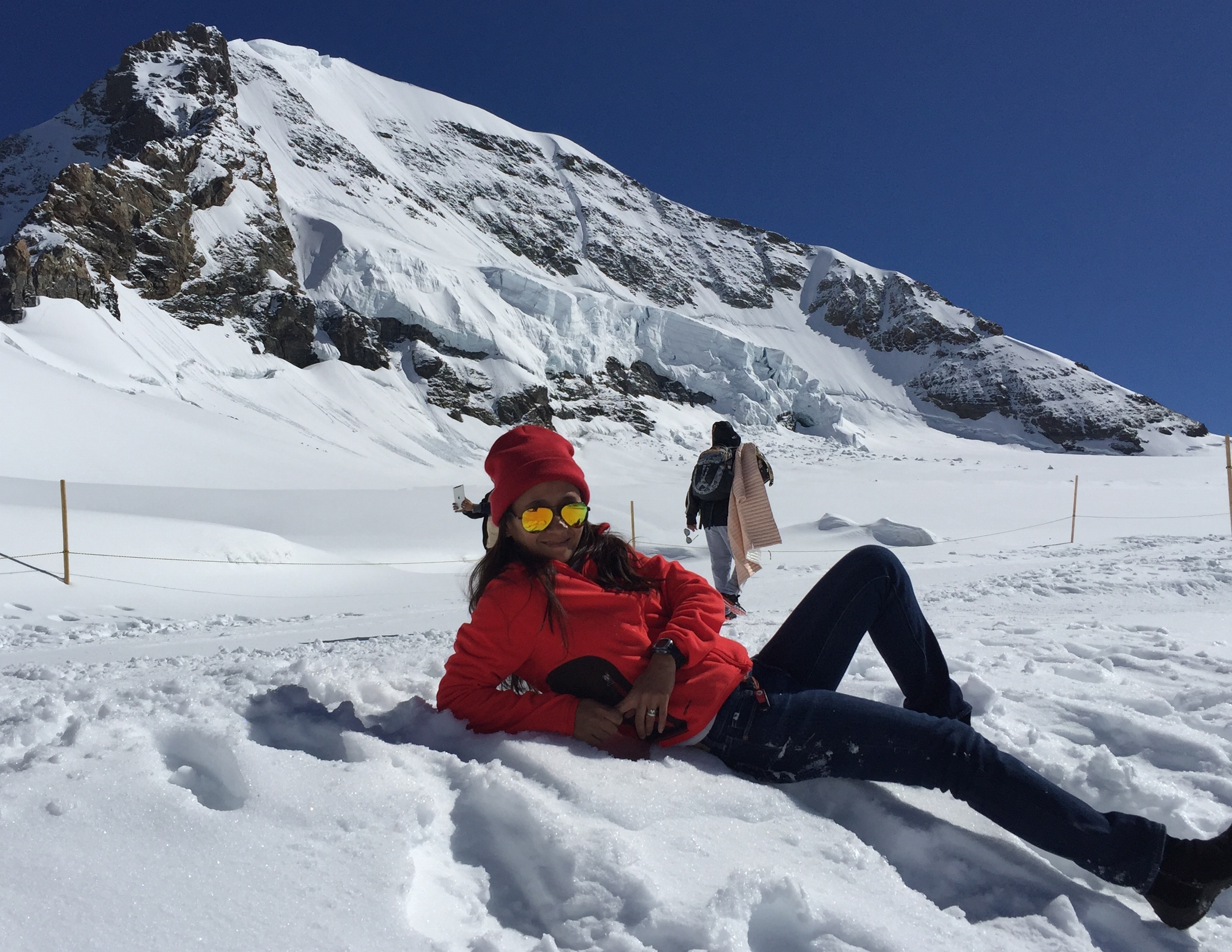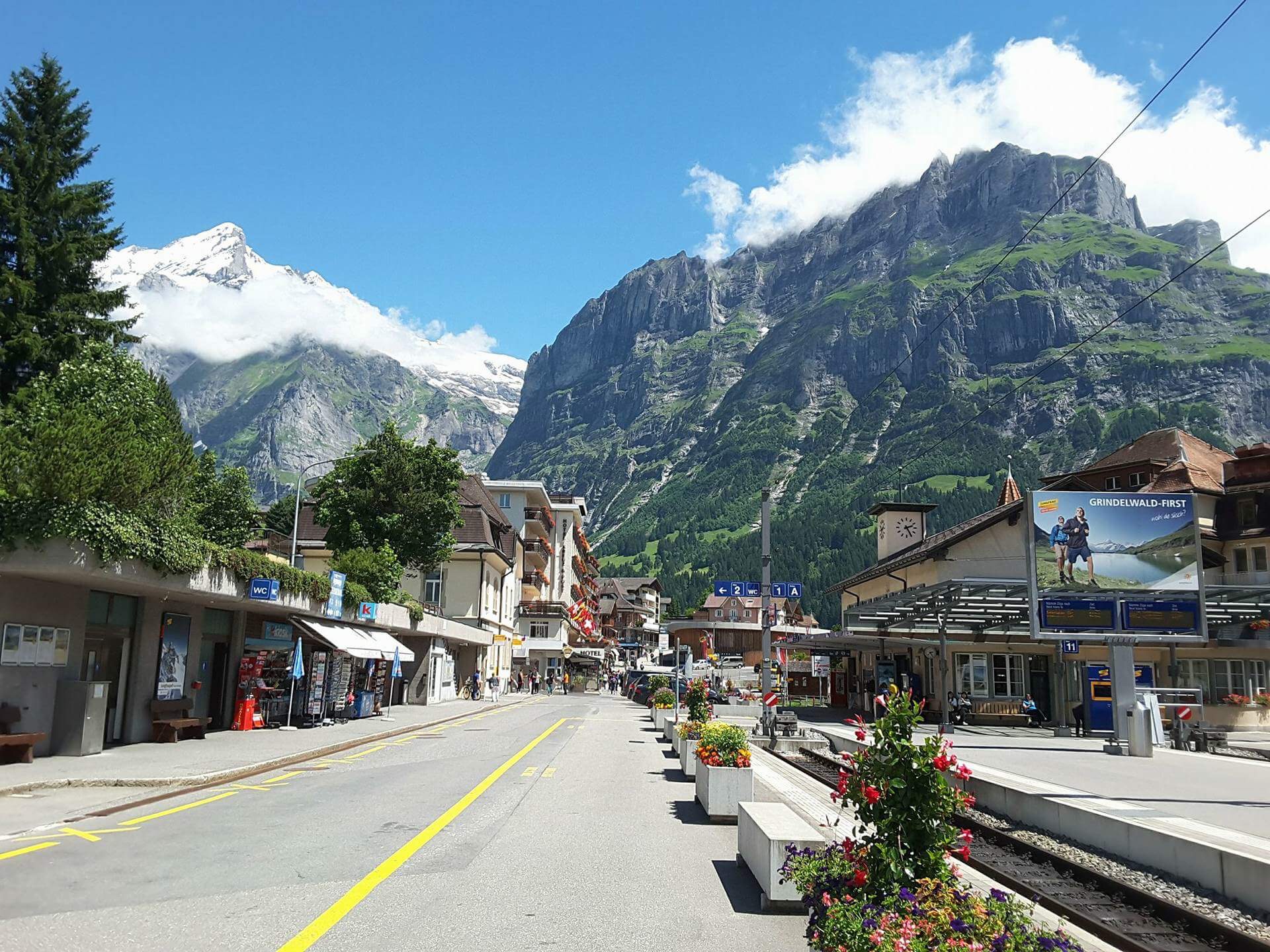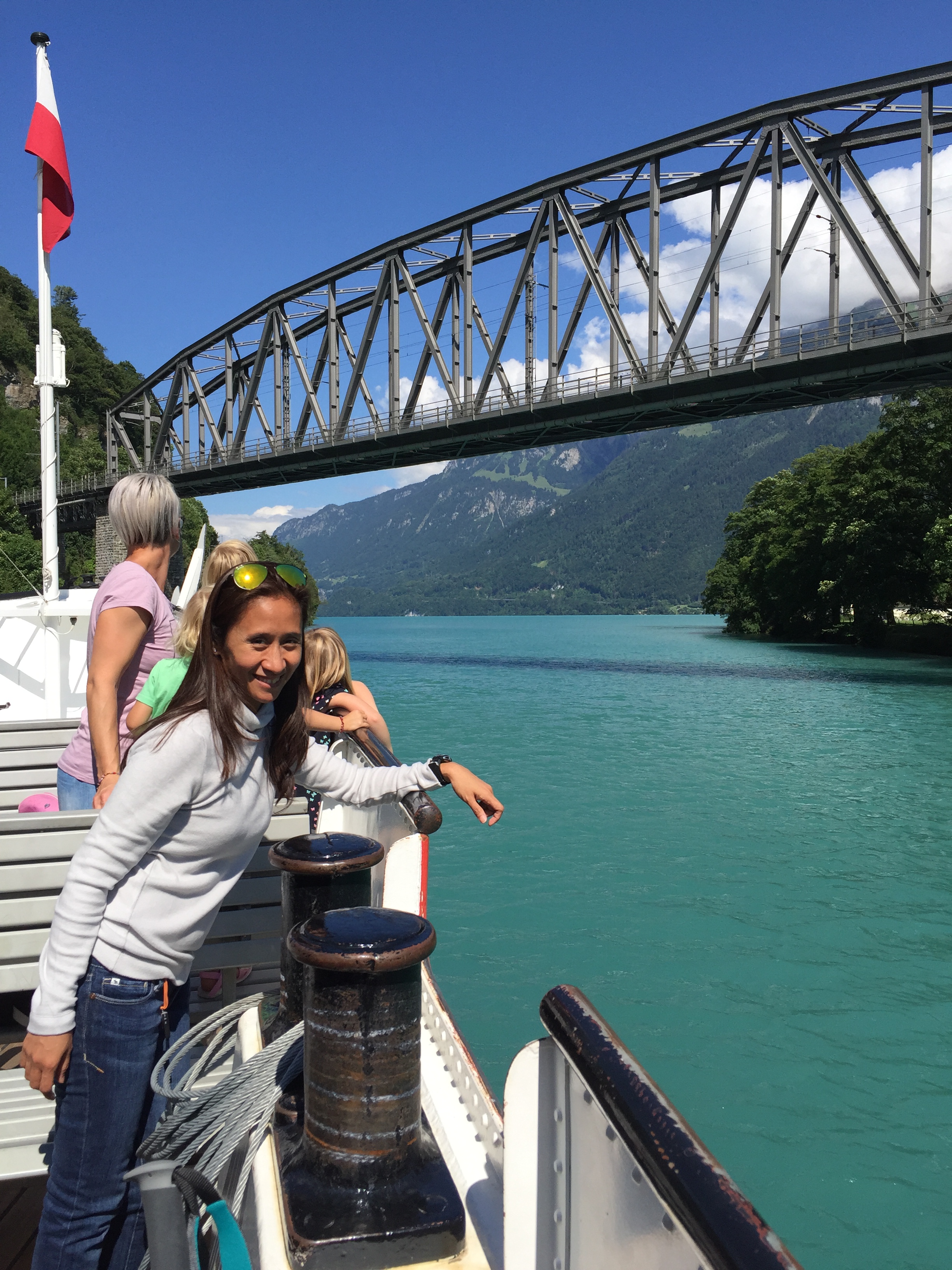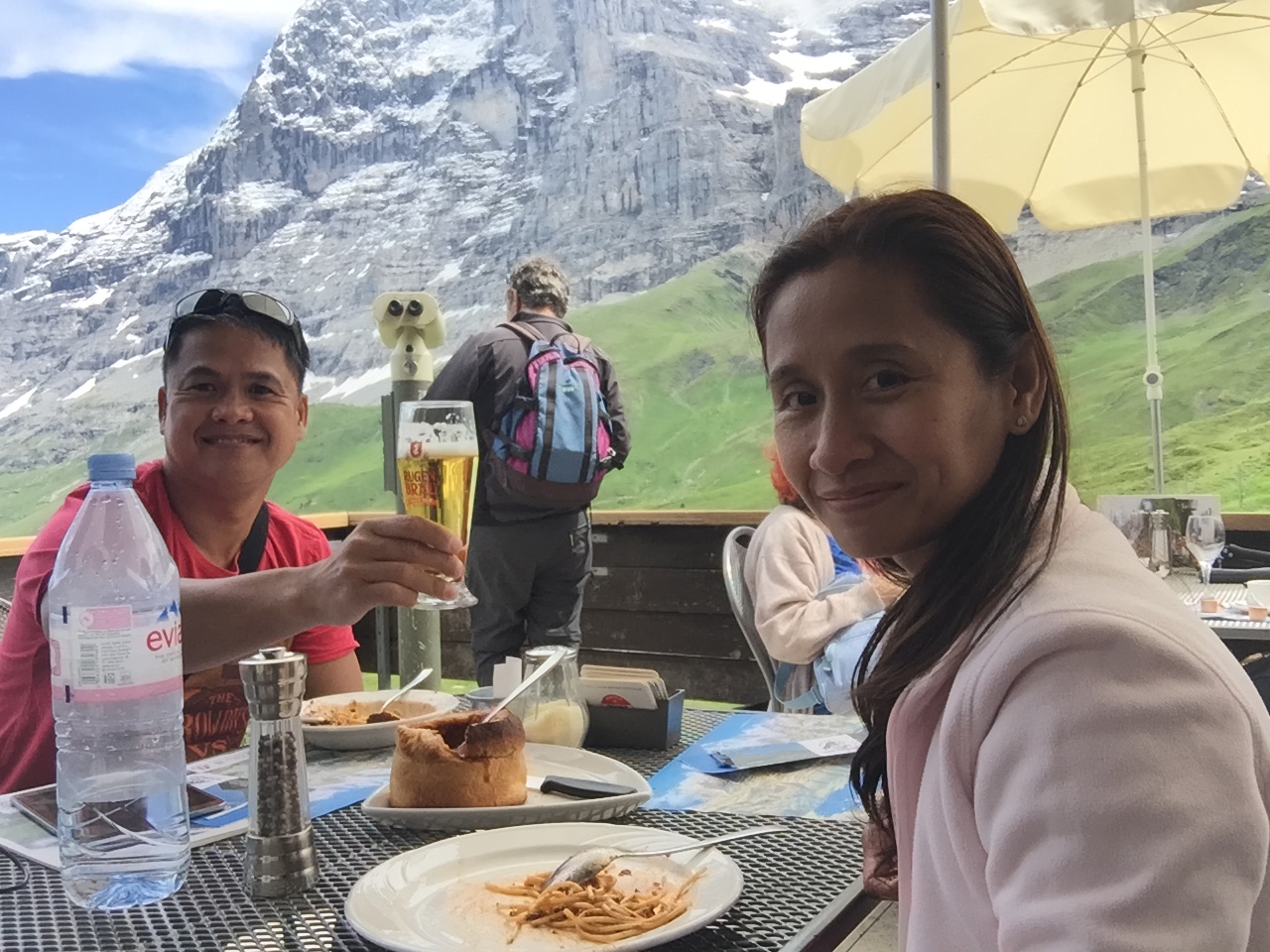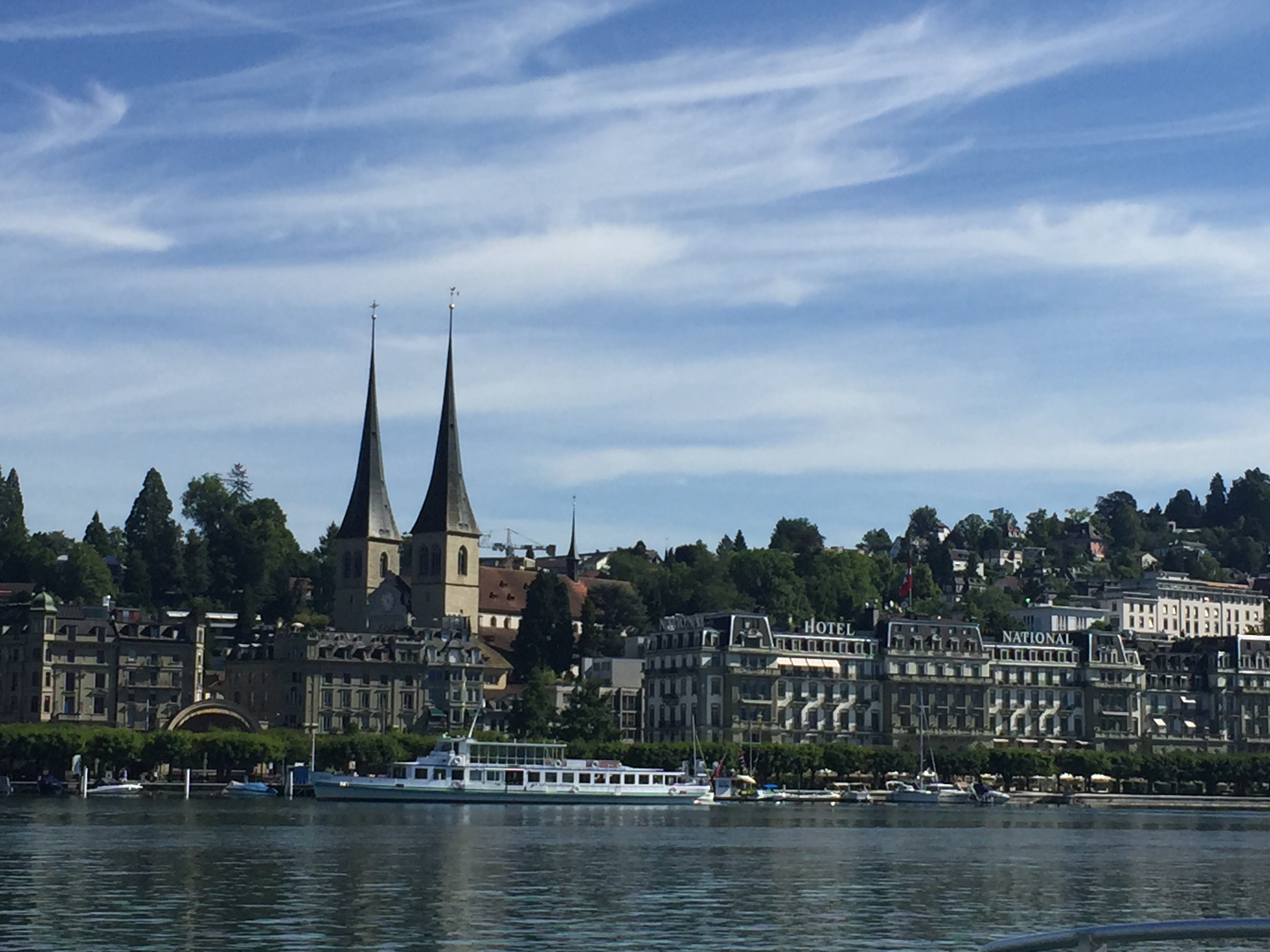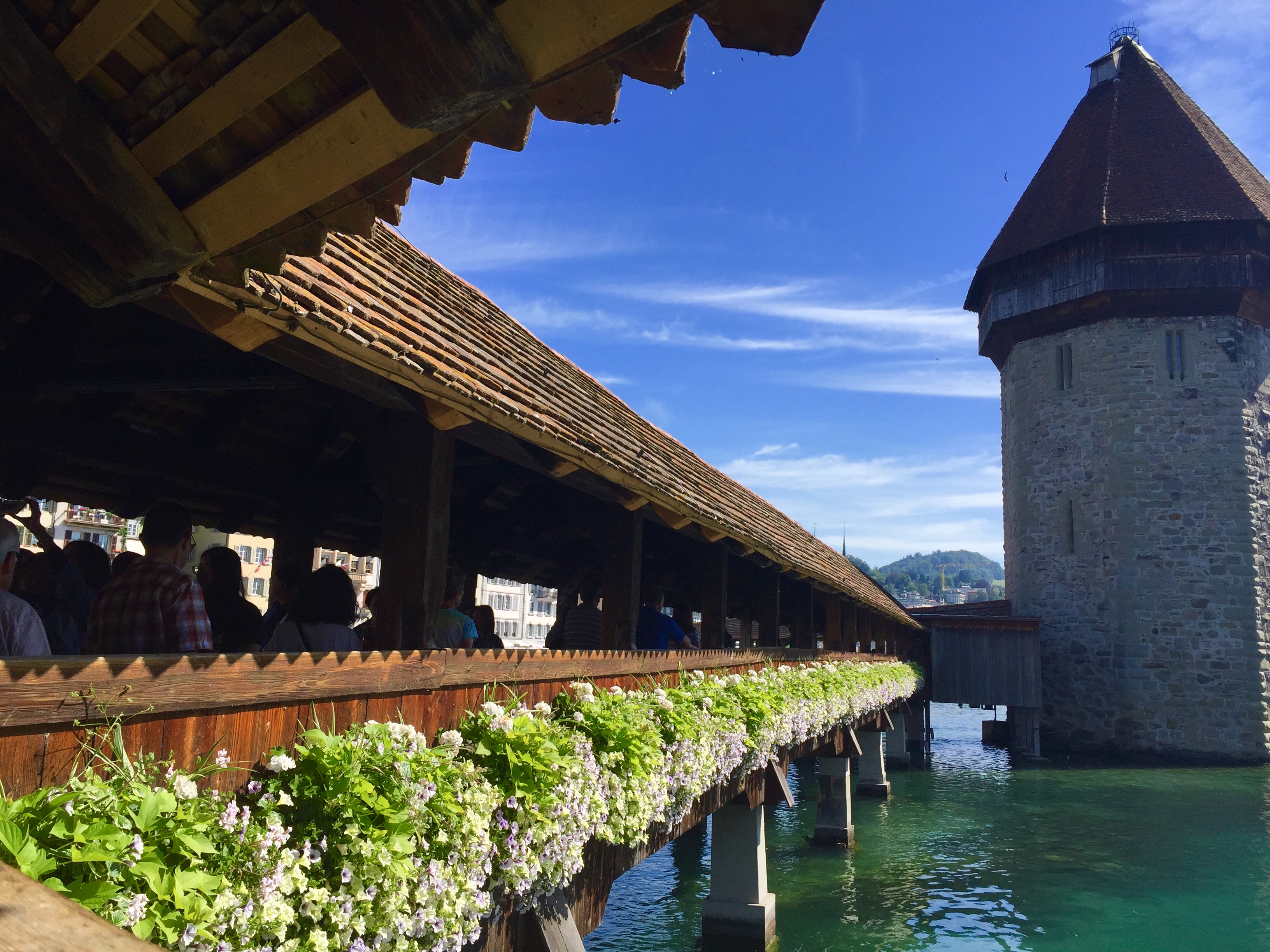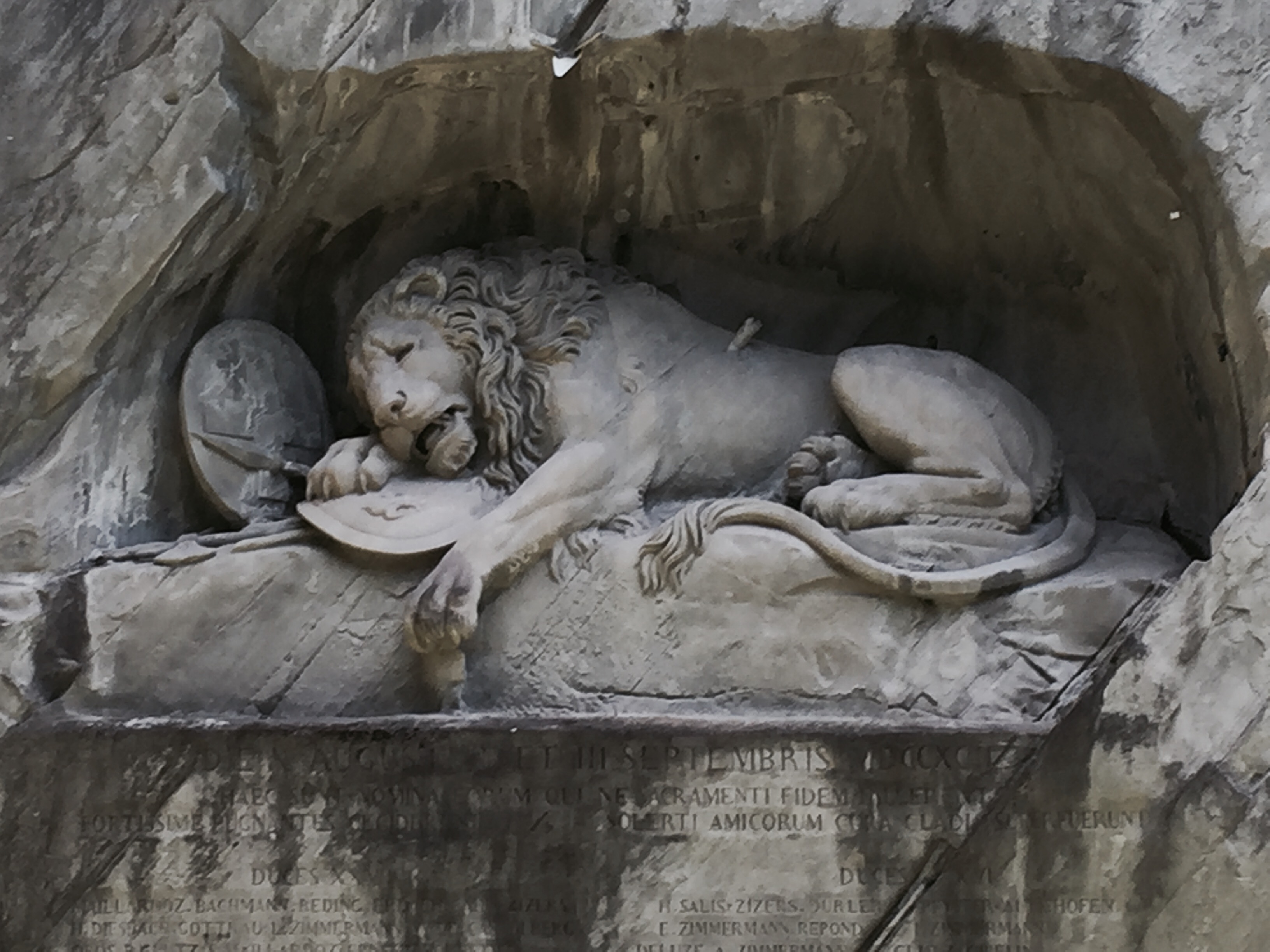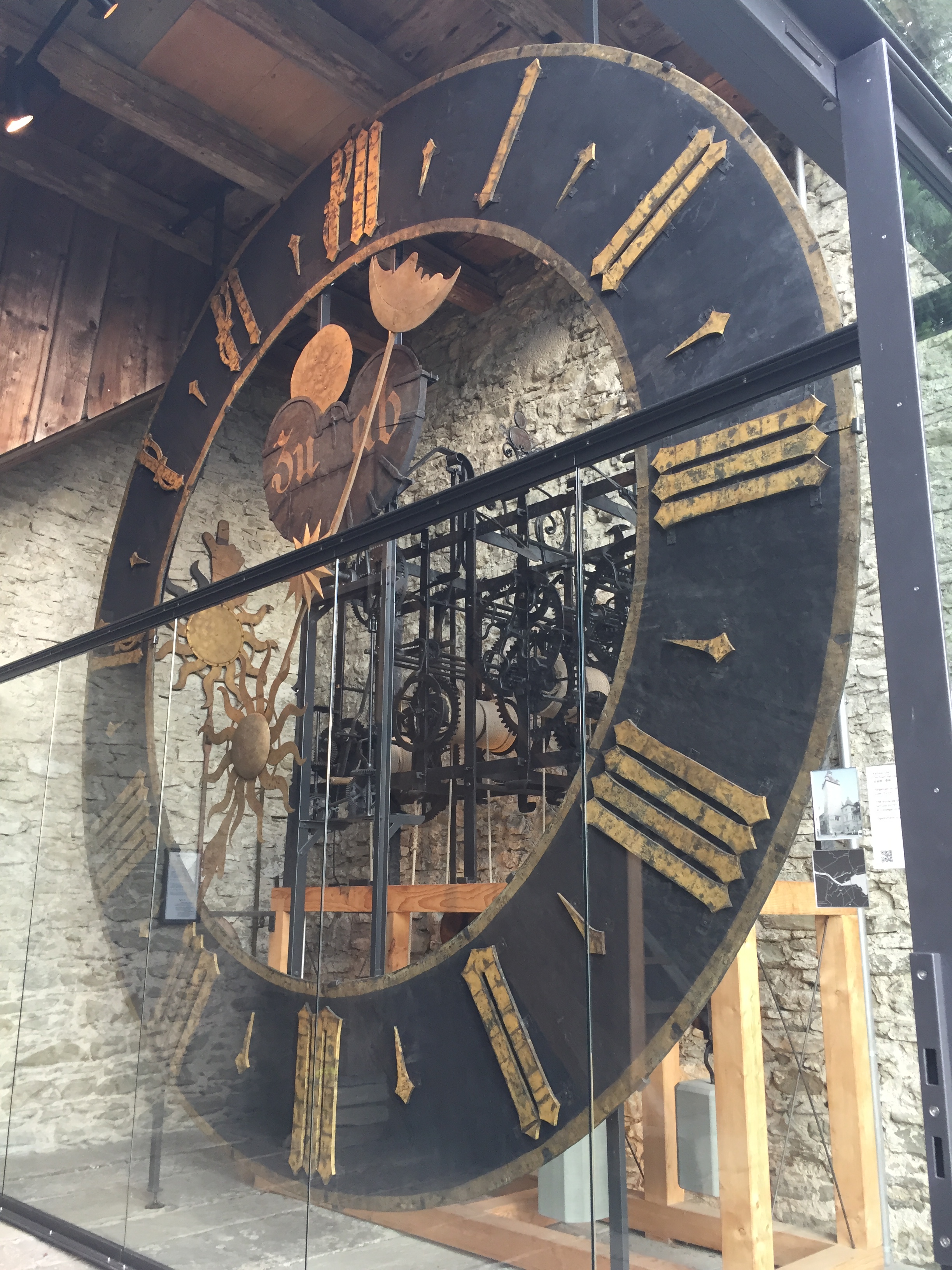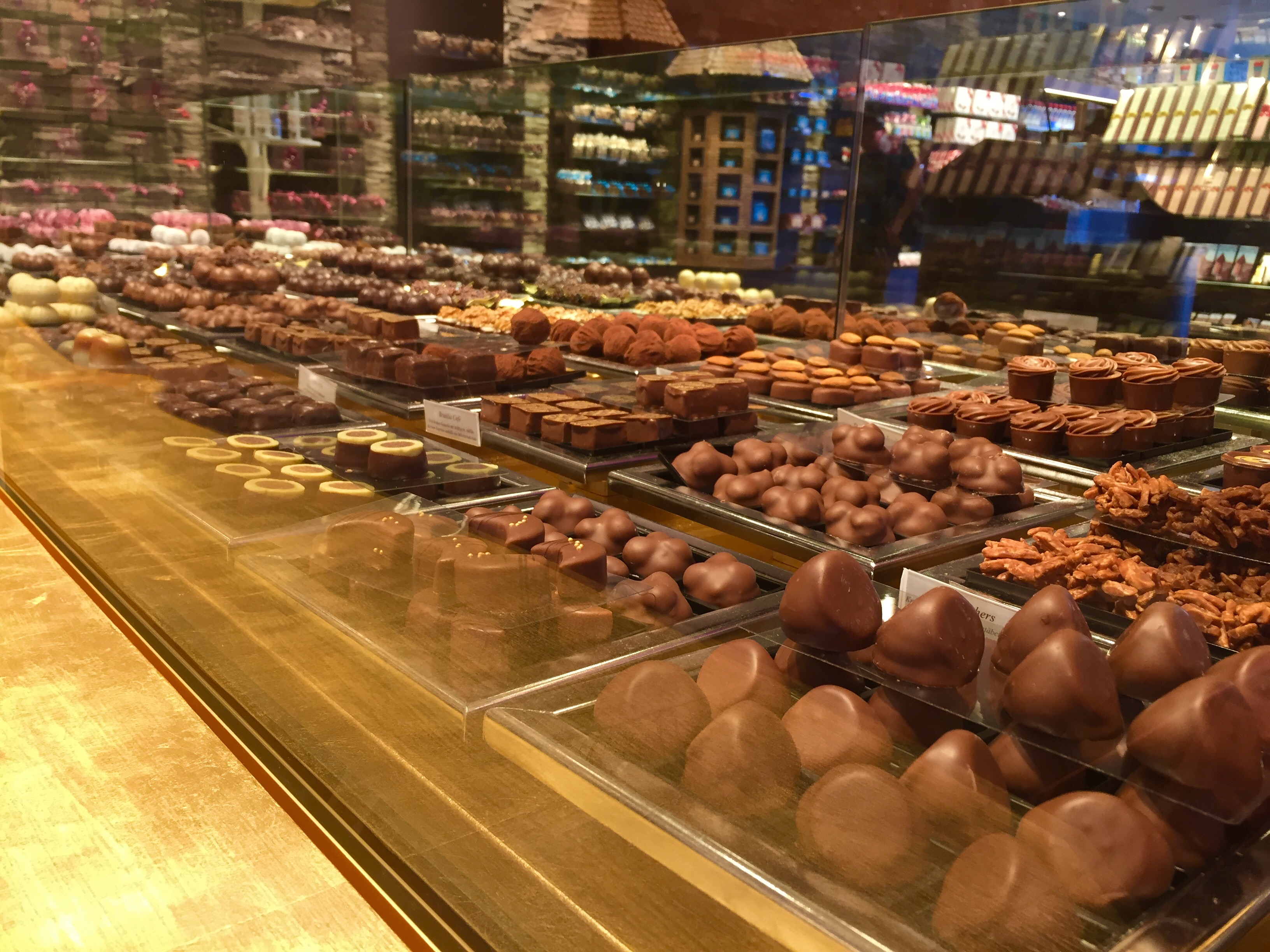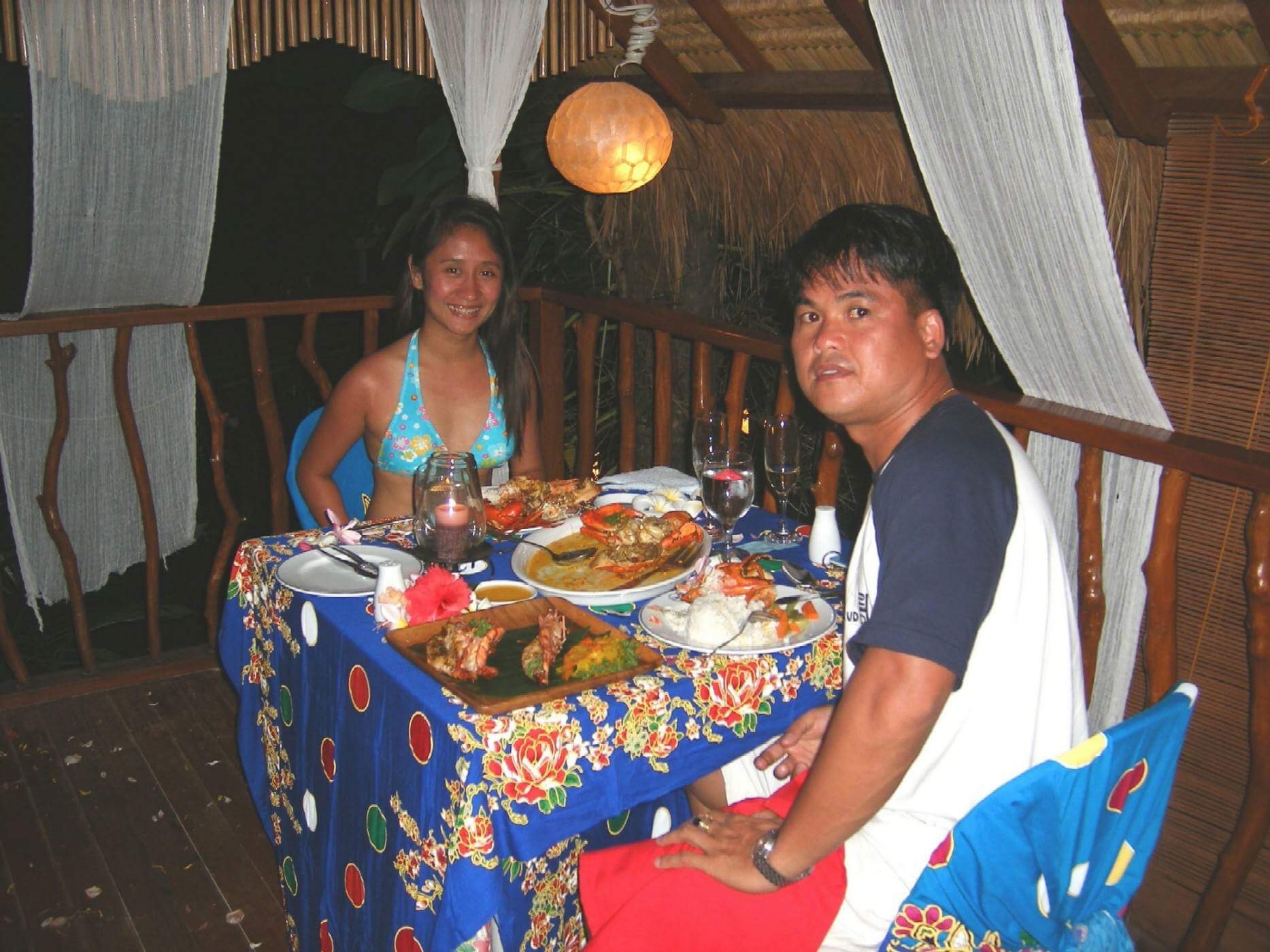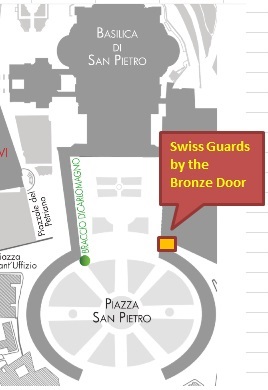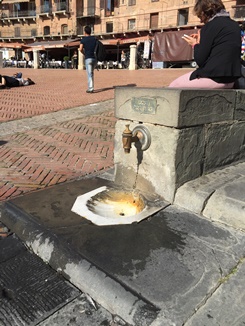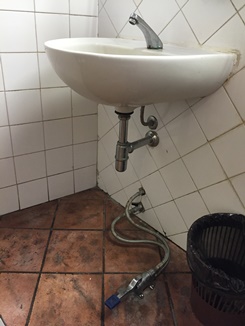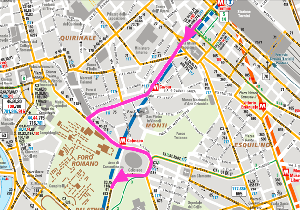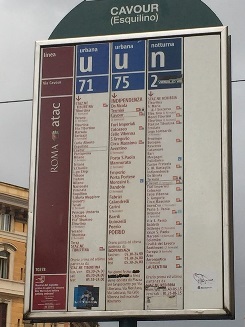The 4th and last leg of our Euro Tour is The city of love, the city of lights.
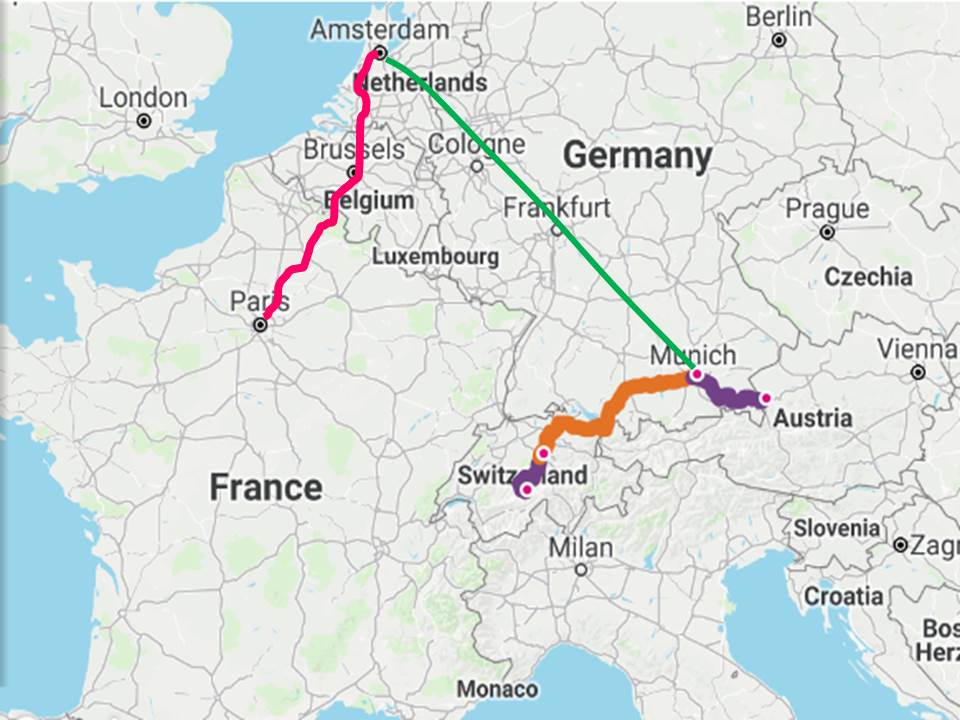
Friends, who know me well, would raise an eyebrow if I say I am travelling to Paris. They know I am the type who would prefer a more adventurous type of outdoor activity, something that involves a lot of nature, wilderness or the ancient world. Paris, being universally known as the City of Love, just doesn’t fit into my un-romantic preferences.
So why, you might wonder, I still went? The answer is quite obvious, and you would have done the same thing. I was already in that area of Europe, so I might as well the see this overly romanticized place and floor my curiosity, but I have read a lot and have been amply warned, so I knew what to expect.
Despite IG photos showing love in the air, with the famous Eifel Tower in the backdrop, it is far from romantic. So don’t be fooled and manage your expectations. Better acquaint yourself with the thing called Paris Syndrome, lest you fall ill with it. But that is not to say that there are no interesting places here. In fact the Eiffel Tower pales in comparison to those monuments and churches that we have visited.
So Paris it is…
Day 11
From Amsterdam Centraal, it was a 3.5-hr train ride to Paris passing through Brussels, Belgium. It was also a costly journey as hubby and I decided to just buy the ticket a day prior, to give us more flexibility in our schedule. What we forgot to anticipate was the influx of travellers going to Paris for the upcoming Bastille Day.
We arrived in Paris at almost 2PM and checked in at our Hotel which is a good 800m walk from the train Station.
Musee de Louvre – The Louvre Museum (6PM) – Group Tour by Walks of France

Musee de Louvre with the Pyramid

Musee de Louvre
Going to the world’s largest, most popular and most visited art museum, needs proper strategy. You have to consider the crowd, the security measures and time. Having more than 380,000 objects and about 35,000 works of art on display, one can spend months inside if he is to look at each of them. It is important to prioritize as there is a vast display of themes which ranges from Italian to Greek to Egyptian, French and many more. If your main (or the only) purpose is to see the Mona Lisa and be able to have an IG post with it, then go straight to it (1st floor 13-15th century Italian paintings). You can walk aimlessly from one display to another after that. However if you want to give more depth to your visit and probably see and learn more, then a tour guide is highly recommended.
Not wanting to get lost in the maze of The Louvre and at the same time not wanting to miss the most important ones, we just joined the group tour offered by Walks of France.

One of Louvre’s hallways

with Mona Lisa

underground of Louvre
We picked this special tour which is only available every Wednesday (the day of the week when Louvre extends its opening hours until 9:30PM) and gives a very good timing for those who want to avoid the crowd. We started with the tour of the underground to see what remains of the foundation of Philippe August’s fortress that the Louvre used to be in the 12th century. This tour was strategically planned such that the last stop to see is the famous Mona Lisa, which is about 10-15 minutes before closing time. The old adages “saving the best for last” and “delayed gratification” held so true here as the normally jam-packed Mona Lisa section, during those last few minutes, is so spacious that we could have played volleyball or “patintero” in the room.”
Tickets:
Option 1: For self tour, buy your ticket online to avoid long queue: There is also an option at the website should you prefer a tour guide. https://www.ticketlouvre.fr/louvre/b2c/index.cfm/home
Option 2: Avail the one offered by Walks of France:
https://www.takewalks.com/paris-tours/louvre-tour-mona-lisa/
Transportation.
From Gare De L’Est (Verdun) Metro Station, Take M7 line.
- Alight at Palais- Royale (Musee de Louvre) Metro station.
- From the station it is a 3 min walk to the Museum
Tips in visiting Musee de Louvre
- Pre book online to avoid long queue.
- Study the map and floor plan. It is a vast place and one could easily get lost.
- Short list those arts which you wish to see.
- You can stay for as long as you want but 3-hrs is optimum if you don’t want to feel overwhelmed.
- Mona Lisa room is the most crowded of all. Save it for last: around 9:30PM (Wednesdays/Fridays) when crowd has thinned out.
- There are special days when Musee de Lourve is open for free. Get tuned by visiting the official website for updated announcements. https://www.ticketlouvre.fr/louvre/b2c/index.cfm/home
Day 12 – Self Tour
12.1 – Basilique du Sacre-Coeur (Basilica of the Sacred Heart) – 10-11:30 AM

Basilique Sacre Couer

Inside Altar
This is the 2nd most visited monument in Paris. Located atop Montartre (the highest point in Paris being at 130m above sea level), this church reaches up to 83m high with its bell tower and dome, making it the 2nd highest point in Paris, next to Eifel Tower. This would make a good option for those Lenten “Visita Iglesia” activities as the commute to the very site it is already penitence in itself. Despite being armed with a map, we still made some wrong turns along the winding uphill path but our hard work was paid off when we finally see the whipped cream-like edifice which was built from stones quarried from Chateau Landon area. These kinds of stones secrete calcite, when it comes in contact with rain water which explains its creamy white appearance.
Built between 1875-1914, this Basilica was said to have been constructed as a national vow if Paris escaped untouched during the French-Prusian War. But since France lost to the said war, it was also interpreted as a condemnation for the sins of Paris and building this church was a way of reparation.
Tickets: Entrance to the Basilica is free
Transportation:
Take Subway Line 4, and alight at Chateau Rogue
From Chateau Rogue, walk southwest ward along Rue Poulet, turn right along Rue Clignancourt.
Turn left at Rue Mueller, continue on to Rue Maurice Utrillo (a park area).
12.2 – Arc de Triomphe (12-2PM)

Still about 100m from the base

Winding staircase to the top

view from the top of Arc de Triomphe
Conceptualized in 1806 and completed between 1833-1836, this 50-meter high monument, which is also the rallying point of military parades, honours those soldiers who fought and died for France during the French Revolutions and Napoleonic Wars. At the bottom of the arc is the tomb of the Unknown Soldier who died in WWI. This is also the reason why parades and other celebrations nowadays avoid marching directly through the Arc.
Accessing the Arc is a bit tricky as it is situated at the centre of a very busy roundabout. By Bus#30, we alighted at Charles de Gaulle-Étoile-Kleber station, but we were still about 100 meters from the Arc’s base. We do not know how to get to the Arc’s base and we did not see people crossing the street just to get to it. There must be an underground passage, but where? (This one, I failed to do my due diligence). We can circle the Arc to look for it, but that would mean about 630 m circumference walk not to mention crossing the 12 roads of chaotic traffic. There was not much choice but to start doing so. Looking around, we can see people disappearing into what we suspected as a subway entrance. Without signage, we took the entrance and lo and behold, it lead us to the ticketing booth and entrance section of Arc de Triumph. After a passing through a tight security check, we found ourselves climbing up the narrow winding staircase towards the top. (You can opt to take the elevator.) And at the top, we get to see Paris, especially the stretch of the famous fashion street that is Champ Elysees.
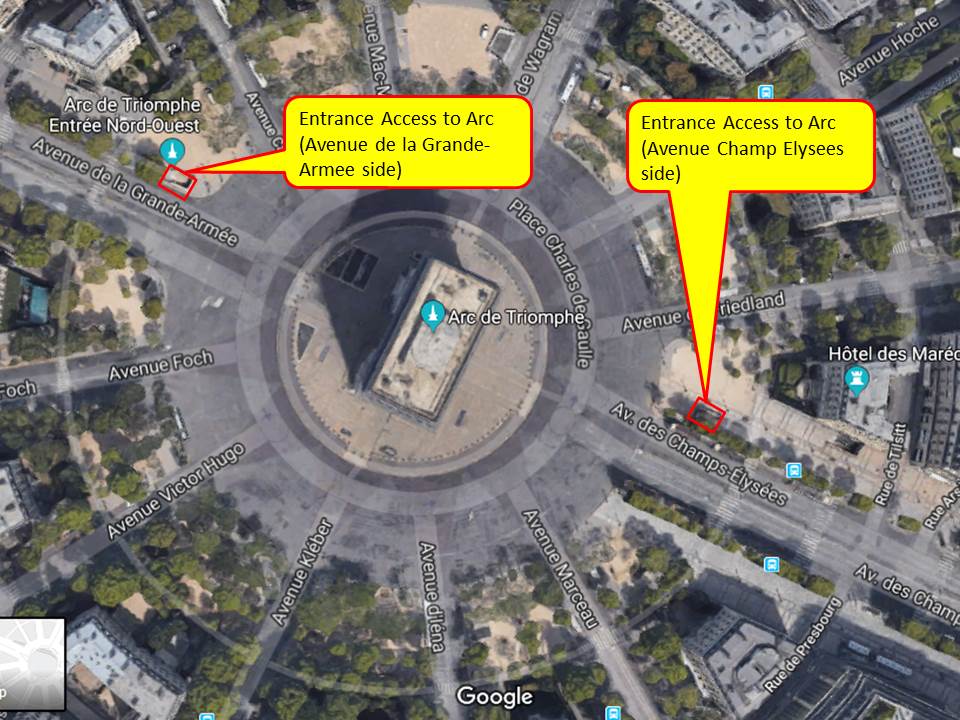
Entrance access to the base of Arc de Triomphe
Tickets:
There is no need to pre book. You can just go there straight away and buy entrance ticket if you wish to climb to its deck.
Transportation
Take Subway Line 4 or Bus Line 30 or RER and alight at Charles de Gaulle—Étoile station. From Charles de Gaule-Etoile station look for the two underpasses located at the Champs Élysées and the Avenue de la Grande Armée to access the base.
12.3 – The Eifel Tower (3PM)
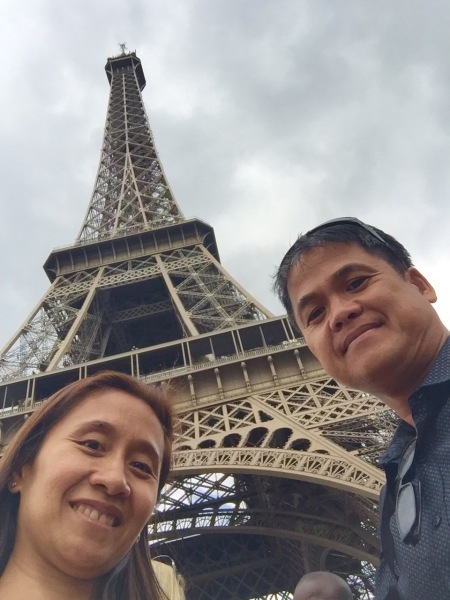
When you talk about Paris, you always think about Eiffel tower. In fact, Paris has become synonymous with the Eiffel Tower that you can never talk about one without imagining the other. Nobody goes to Paris without having his photo taken with the Eiffel tower in it. Due to its popularity, I need not talk about its background, but here are some interesting facts which may not be known to most.
- Though it is named after the Gustave Eiffel (the owner of the construction company), it was the 2 senior engineers Maurice Koechlin and Émile Nouguier who were the brains of the design and construction.
- The Eiffel gets taller by around 15cm in summer time as it (purely made of metal) expands due to higher temperature.
- It was supposed to be a temporary structure, planned to be dismantled after the Paris exposition on 1889 celebrating 100 years of French Revolution, where it was used as an exhibit and an entrance structure.
- It provides a good wireless radio antenna which during WW1 was able to intercept a coded message between Germany and Spain that included information about “operative-H21” and eventually lead to the capture of Dutch-born exotic dancer spy Mata Hari.
- The Eiffel Tower never surrendered to the Nazis during the war. When the Nazi war machine entered Paris, French people cut the cable of the lift, leaving no choice for Hitler but to climb it. The big swastika was also not successfully hoisted on top, so they have to make do with a much smaller one.
- Hitler ordered General Dietrich von Choltitz complete demolition of Eiffel Tower, but fortunately the General disobeyed.
I booked this online 1 month prior because I knew this is the most coveted attraction. I chose the 3PM entry time which I presumed is just right if we will be coming from Arc de Triumph at 2PM by Tram or bus. However, from our difficulties locating both Arc de Triumph and Sacre Coeur earlier that day, I didn’t want to take chances being late, so we hailed a taxi. With only a few minutes to spare, we rushed to the guarded entrance only to be told, that The Eifel is closed for the day due to President Trump’s visit. This is a very disappointing development, but there is nothing much I could do so I grabbed some sundae, to keep my cool. I hate it when my plans get ruined. I later learned that they have given advance notification by email to those guests who have pre booked on the affected time slots, asking them to come earlier or re schedule their bookings for free. With that, I commend The Eiffel Tour Management for their sense of responsibility. It was my fault that I didn’t check my emails.
Tickets:
Book online in advance. There is an option should you wish to go to the summit or just the 2nd floor. This is the official ticketing website: https://www.toureiffel.paris/en
Transportation:
By Metro:
Option1: Metro 6 – alight at Bir-Hakeim
Option 2: Metro 9 – alight at Trocadero
Option 3.RER C – alight at Champ de Mars – Tour Eiffel
Buy Bus: You can take any of the following Buses: 42, 69, 72, 82 , 87
12.4 – Notre Dame de Paris (4-5PM)

Notre Dame Cathedral

Inside Notre Dame
From Eiffel, we proceeded to Notre Dame de Paris (Our Lady of Paris).Another Paris emblem, this church is considered as the finest of French gothic architecture with its rose windows, arcs, flying buttress and intricate sculptural decorations depicting those scenes and characters from the Bible. Construction began in 1160, and was completed in 1260 (100 years in the making!) Of course, the cathedral was not spared from the wars and riots during the time which resulted to destruction of most of its statues and treasures. During the French Revolution it became a warehouse that served as storage of food. It was only after the success of Victor Hugo’s novel “Hunchback of Notre Dame” in 1831 that interest in restoration of the Cathedral was again conceptualized.
Tickets:
Entrance to Notre Dame Cathedral itself if free, but should you wish to climb the towers, you have to pay €10 which can be pre-booked (see http://www.tours-notre-dame-de-paris.fr/en/Prepare-for-your-visit/Practical-information). You can also climb it for free if you availed of the Paris Pass (more on this later).
Transportation:
Take RER C and alight at St Michael Nd RER C. Continue walking southeast ward until you reach Pont Au Double (an overpass), which you will take to cross the River Seine.
12.5 – Dinner Cruise by Le Calife (6PM on wards)

Le Califfe Barge

With our fellow cruise diners
A must-do in Paris, this one is the best and probably what made our Paris visit romantic. I recommend setting this on the 2nd to the last evening of your stay. I say, second to the last evening, so you will get another chance the following night in case something inevitable comes up (like high level of water on the river and the boat cannot cruise) . Another reason to save it for last is: as a way of anticipating for possible Paris Syndrome attack, this Le Calife Dinner Cruise could probably act as antidote.
There are a lot of cruises along river Seine which are being offered, but Le Calife is definitely one that will make it more memorable. It is a 2-hour dinner cruise on a boat barge with retractable roofing (for you to see the stars in a cloudless night?). The journey is perfectly timed such that you will be cruising along River Seine from dusk and just in time to see Paris and the Iron Lady Eifel come alive with lights! To say that the food is great is an understatement. Staff members are courteous and service is superior. Since it is a fine dining cruise, crowd is not an issue as guest quantity is limited and controlled (pre booked). Talking about guests, if you’re up to playing dress up, then you are most welcome here. We had a couple of guests who just got engaged while we all cheered on.

Starter: Gourmet Salad with Foie Gras slithers

Starter: Chef’s Gravlax salmon
It was almost a perfect night, until I felt the need to use the ladies room. I didn’t notice there was a glass door leading to the 1st level dining area (where the toilet is). So you could imagine all those diners looking at me as I shattered their quiet evening when my forehead made an impact against the glass door. To make matters worse, I have to cross the centre aisle of the whole dining area to get to the washroom. Deymnnnn!
It must have been the wine! Nevertheless it still was the best night.
For more information, this is their official website. Depending on your chosen date, you may need to call to make a reservation. A deposit payment is also needed to confirm the booking. http://www.calife.com/english
Day 13 – Self Tour
Day 13.1 is Bastille Day (July 14, 2017) – 9AM

fly past

fly past with the color of france
This day is supposed to be shopping day at Champ Elysees, but the shops are inaccessible due to the security barricades installed along that street and the thick crowd celebrating the Bastille Day. We didn’t really plan well enough for this. Honestly, had I known days in advance that it will Bastille Day, I would have –rearranged our itinerary. Remembering the terrorist attack on Bastille Day of 2016, and being the paranoid that I am, I was apprehensive to go out on this day. People would be out on the street and what is more appealing to terrorists than this scenario. This is one of the grandest in France’s annual celebrations marked with military parade, fireworks and acrobatic display by French Air Force. Tight security was evident especially along Champ Elysees, the street where the heart of the celebration is held. I was just able to see a little of the parade as I couldn’t move forward through the thick crowd of onlookers. This is also a day when your feet and your fitness level will be put to test. There was no choice but to walk since all the trams and trains passing this way were suspended. I have to admit, I had lump in my throat, as I watched the Fly Past (Air Display) with envy, thinking back home, wondering when would my country be able to make such a luxurious display too.
As soon as the Fly Past ended, we moved out of these crowded area to places with much lesser crowd:
Day 13.2 Sainte Chapelle (11 AM)

intricate stained glass windows
Another building of Gothic architectural style is Sainte Chapelle. Construction started in 1238 and was completed in 1248 (also a decade long of construction). Initial purpose was to house King Louis IX’s collection of relics from the Passion of Jesus Christ, including the Crown of Thorns (which is in Notre Dame Cathedral). Just like most of Paris’ architectural landmarks, Sainte Chapelle has been badly damaged during the French Revolution and it was only in the 19th century when restoration was done. Sainte Chapelle prides itself with the widest (630sqm) and most complex stained glass windows depicting 1130 Biblical figures from both the New and Old Testament. One of the highlights of this tour is the presentation of the innovative restoration techniques that were used for the upkeep of this chapel especially of those colourful windows.
Tickets:
There is no need to pre-book. Entrance to St. Chapelle costs €10 , but if you have Paris pass, you can present it to gain free access.
Transportation:
Take Metro Line 4 and alight at Cite. Walk southwest-ward along Boulevard de Palais for about 40 meters and on your right is the entrance to the place.
Day 13.3 Pantheon (2PM)
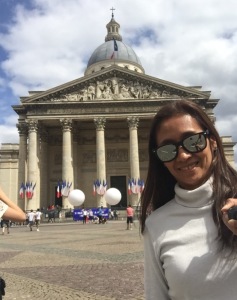
The Pantheon of Paris was built as a way of a vow made by King Louis XV, if he recovered from his illness. He did recover and so a few years later The Pantheon foundations were laid and it took about 30 years to complete the edifice. The Pantheon was originally constructed as church, but shortly after its completetion, it was converted into a mausoleum for the interment of the great Frenchmen. Victor Hugo, Voltaire and scientist Marie Curie are among those who are interred here.

interior dome of Pantheon

Inside Paris Pantheon

The Foucault Pendulum
My interest was captured by Foucult Pendulum that is suspended from its dome and swings back and forth. Foucult Pendulum was an experiment designed by French Physicist Leon Foucault to demonstrate and prove about the earth’s rotation. It is in this very dome of the Pantheon of Paris, in 1851 where Focoult suspended a 28-kg brass-coated lead bob with a 67-m-long wire to prove his point. The pendulum currently on display is just a replica of the original which is now in Musée des Arts et Métiers. (I highly suggest to Google about Foucult Pendulum. It is so interesting!)
Tickets:
There is no need to pre-book and there not much queue here. Entrance to Pantheon costs €8.50 , but then again with Paris pass, you gain free access to it.
Transportation:
Option A (for those up to the challenge):
Take RER B and alight at Luxemburg Station. From Luxembourg station it will be about 600m walk (snaking through narrow and hilly streets) to Pantheon. (~45m Northward along Boulevard St Michel, turn right on Rue Royer-Collard. Walk for another 45 m to cross Rue Gay-Lussac towards Rue Le Goff. Continue on along Rue Le Goff and turn right on Rue Malebranche. Continue along Rue Malebranche and cross Rue Saint-Jacques towards Rue des Fosses Saint-Jacques. It will be about 100m walk along this street, and then you will have to turn left on Rue Clotaire. In about 45m, you will see the Pantheon. Whew! Just writing it, relives the trouble we had when we were looking for it.
A note of advice: just when you are starting to doubt and think that you are on the wrong track as the buildings/private properties and shops that you pass by are small and you cannot believe there is a Pantheon in any of these areas, just believe there will be at the end of the road (lol).
Option B: Take a taxi!
Day 13. 4 Walk around some more
Since this is our last day and the conclusion of our Euro Tour, we just strolled around, enjoyed the food and did some shopping. We were still able to see some more historical building such as the Conciergerie where Queen Marie Antoniette was imprisoned during the French Revolution. There was also the Cultural Center Institure de France and a Monument for St. Michael de Archangel (which is a patron saint of my hometown, Oas, Albay)

Conciergerie

A statue of St. Michael de Archangel

Cultural Institute de rance
Day 13. 5 Bastille Day (Night) Fireworks Display
We went back to our hotel at around 4PM, to take a rest and pack up for the following day’s long haul back home. We were still undecided whether to go out that night to watch the “highly recommended” spectacular (they say) fireworks display on Eiffel Tower for the Bastille Night Celebration. The hotel’s concierge prodded us to go, but anticipating the long walk back to hotel after the grand celebration (trains, I have read, are jam-packed during these hours, that most spectators return to their hotels on foot), considering our tired feet that badly need massage, and the fact that we are not really that fond of fireworks, we opted to just stay in our room (the Eiffel cannot be viewed from hotel room window). The following morning, while waiting for boarding at the airport, I hear a lot of comments about how much they were awed by the fireworks display and so on. I suddenly regretted to have passed up that opportunity to watch.
Tidbits
Paris Transportation
If there is one triumph that I feel, it is that I was able to navigate Paris via public transportation and coming from a country whose public transport system is way much different, I can say that I deserve a pat in the back. Again, I would reiterate to be physically fit to do this. The good thing about it, is you can feast on all European food without the worry of calories, since you are constantly hopping on and off trains and walking along endless streets.
To make our public travel more convenient, we availed of the Paris Pass , which allows you unlimited rides in trains , trams, buses and ferries. It also gives you free pass on numerous museums and landmarks. Click on below link for more info about Paris Pass. You need to buy in advance and arrange for mail delivery or pick up. https://en.parisinfo.com/transport/107175/Paris-visite
Hotel
We stayed at Ibis Hotel Gare du Nord which is conveniently located near Paris Gare du Nord and Gare del Est central stations. The hotel was clean, service was good and the breakfast buffet was good with fair selection of freshly baked breads, cereals, cold cuts, juices and brewed coffee.
Safety
I got a lot of advise to be very careful and watchout for pranksters and pick pockets in Paris, so we were very cautious especially in public transpo. Fortunately we didn’t encounter one, but pls do your own diligence in searching about different cases of scams usually targeting tourists. Stick to the basic rule of never leaving your things unattended and never entertain offers from private individuals about tickets, passes and promos that promise discounted rates. Turn down politely those offering to take pictures for you or offering to watch out luggages for you.
*********
It is when you are not expecting much that you invariable get more. This is true with Paris. I was brazing for disappointment, but it was my not being so obsessed with romance and the Eiffel Tower, that I came to appreciate the best of Paris. There is so much to see, museums and medieval edifices to appreciate, that romance takes the backside of your purpose for the visit and it did me good!
There are still many interesting places to see, but what we saw and learned will suffice for now. We feel we have maximized Paris for 2 and a half days.
Back to my country, I have one wish: That our own government tightly support protection, restoration and proper maintaiance of old / historical buildings, monuments and churches. By support, I would mean, giving proper budget, making laws to protect them and ensuring tight enforcement of this laws and appointing responsible and capable people/committe to oversee this care and to protect demolition of these old monuments. I have seen old churches restored to modern designs. I have seen old belfrys (spanish era) demolished just to meet the wishes of a barangay official to erect a new one. This is unacceptable. There must be some laws, but it is not properly enforced or the government officials are not adequately informed. We are a country of people who so love change and think that keeping abreast with the latest modern design is better than keeping the classic ones. We are losing our treasures and our identity in the process.
This concludes our Euro Tour.
Home sweet home!




